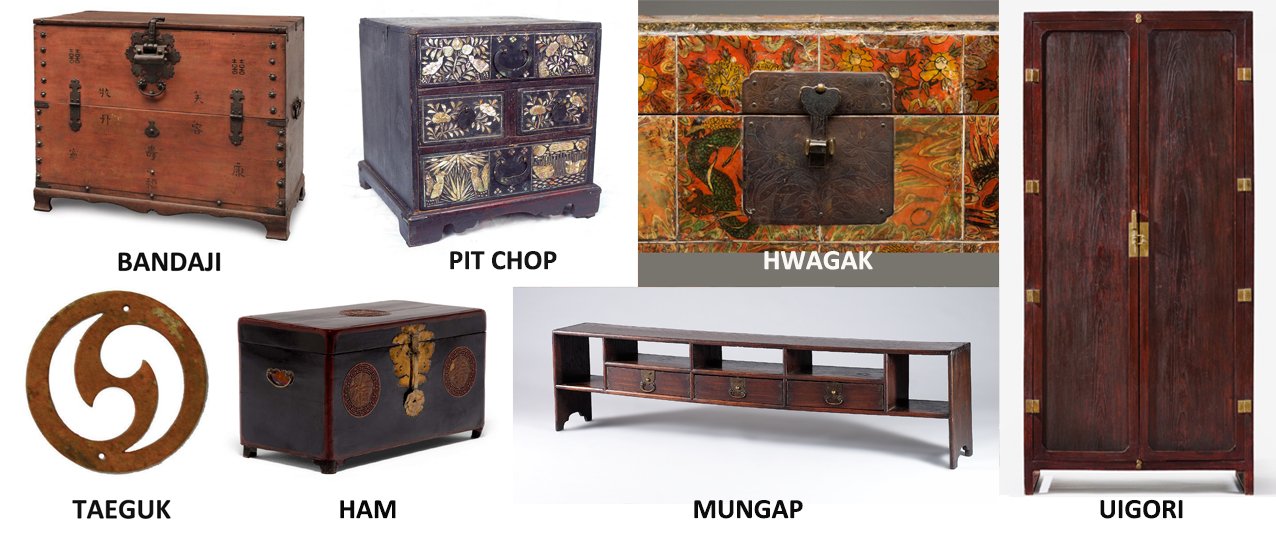JOSEON – 조선 : Last Korean dynasty ( 1392 to 1910 ). Also referred as Yi or Choson Dynasty.
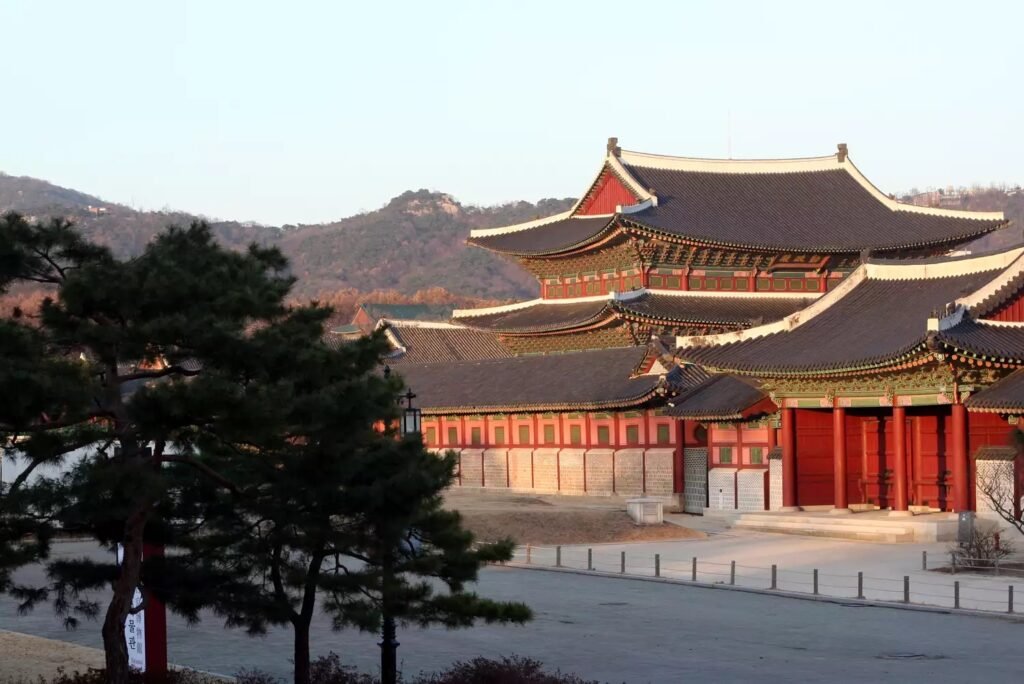
THE KOREAN HOUSE
HANOK – 한옥 : Korean traditional house. Hanok were first designed and built in the 14th century during the Joseon dynasty.
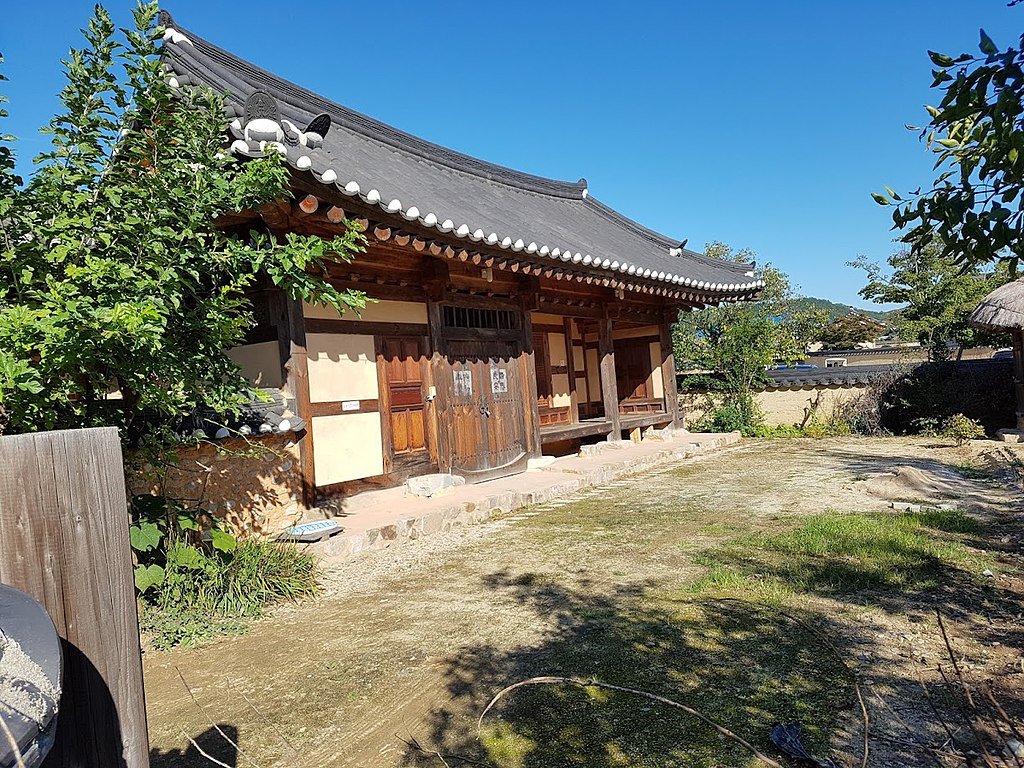
ANCHAE – 안채 : is a section of a Korean traditional house that is reserved for women of the household. It can be composed of a number of rooms with different functions.
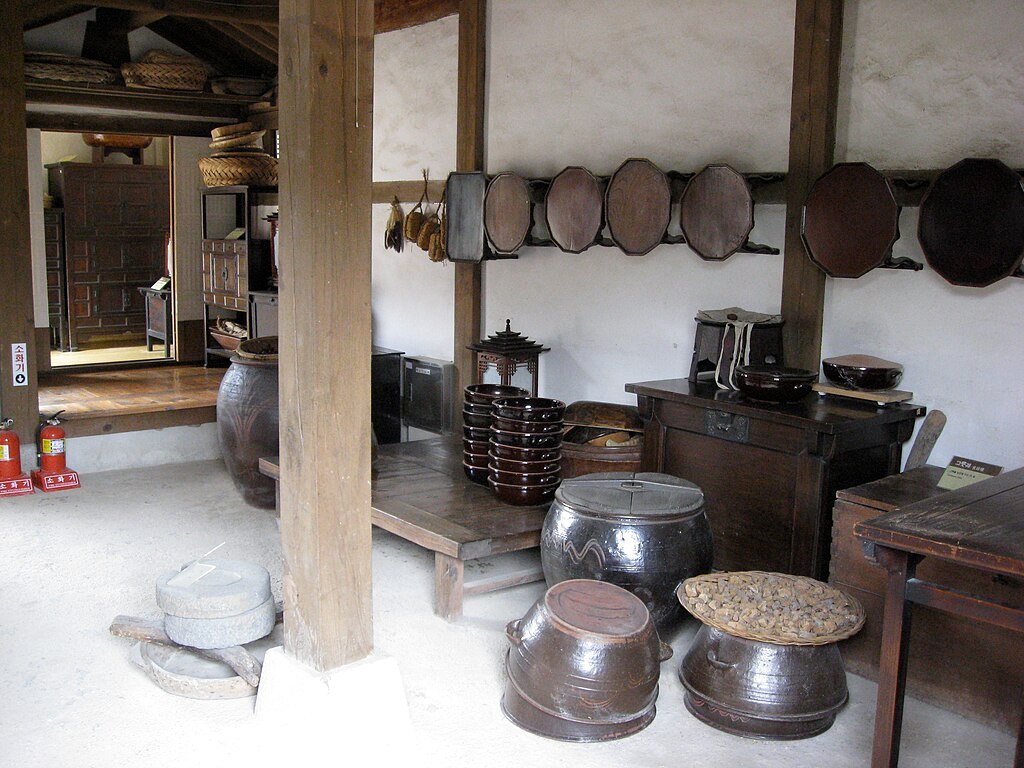
ANBANG – 안방 : The anbang was the innermost room of the anchae. The floor of the room was covered with laminated paper covered with bean oil (장판지마감), or a mat covering the soil floor of the ondol (heated floors).
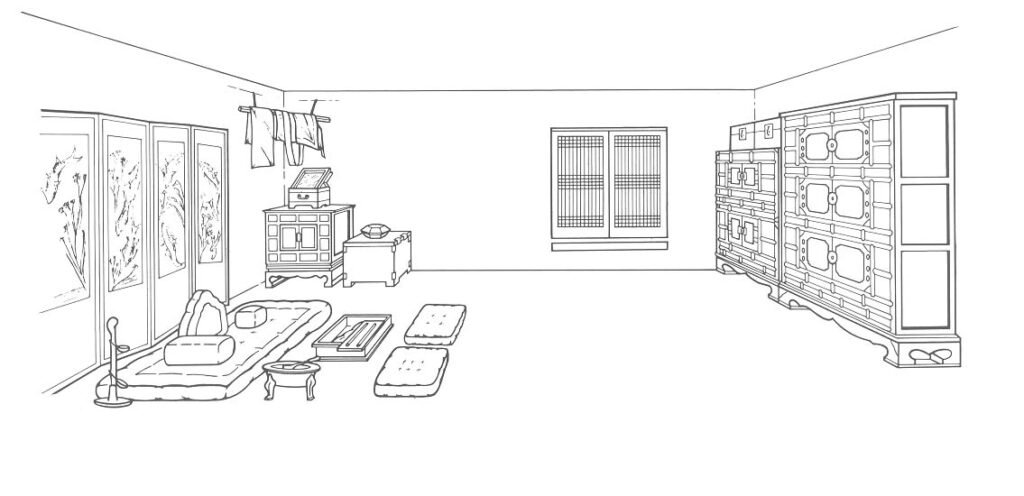
CH’ANG – 창 : Window. As its structure was similar to that of a door, and the Korean words for a window and door were often interchangeable.
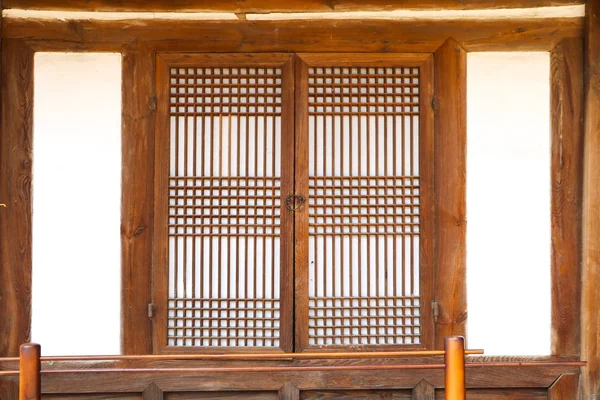
MARU – 마루 : Also called “Ch’an Maru” is the wooden floor built with long and narrow wooden planks.
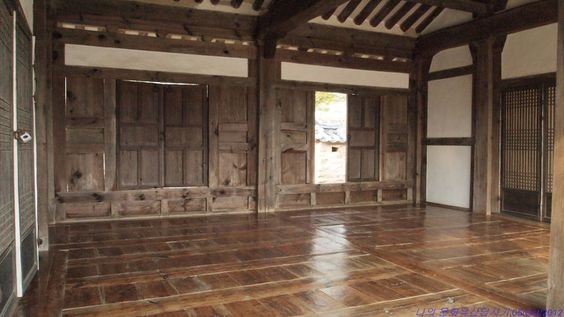
MUN – 문 : A wooden door.
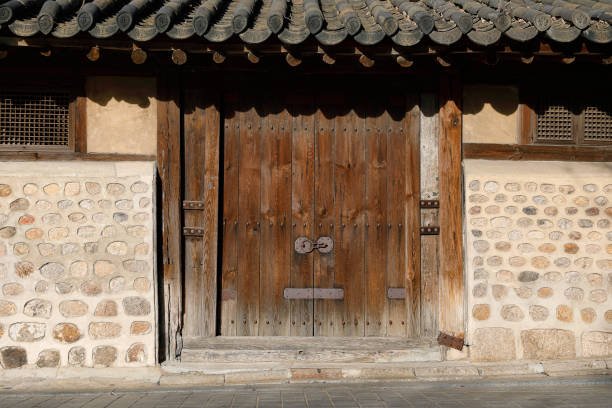
ONDOL – 온돌: Heating system. Heat from the fireplace flows through pipes under the floor.
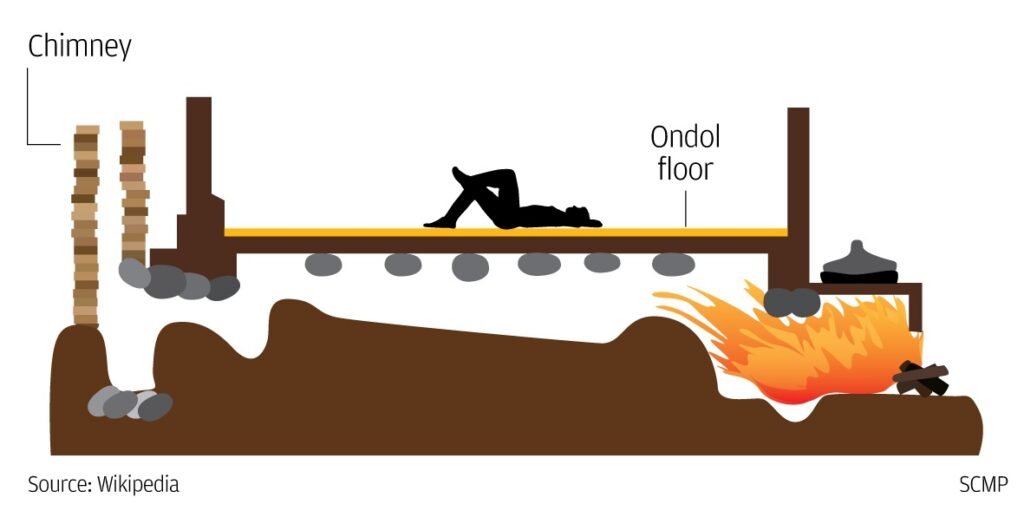
SARANGBANG – 사랑방 : A men’s room, primarily used for studying, writing poetry, and leisure activities.
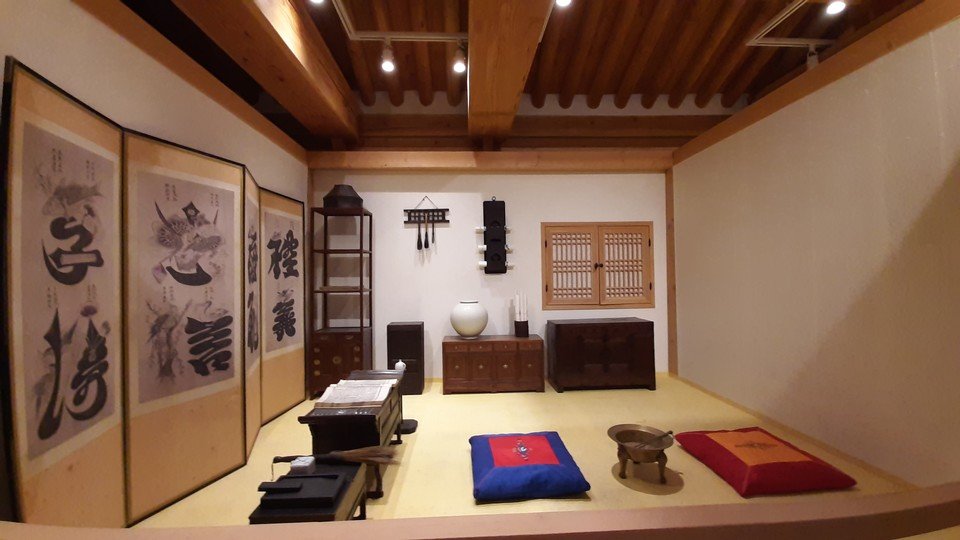
SARANG CHAE – 사랑채 : Men’s quarter in the Korean house.
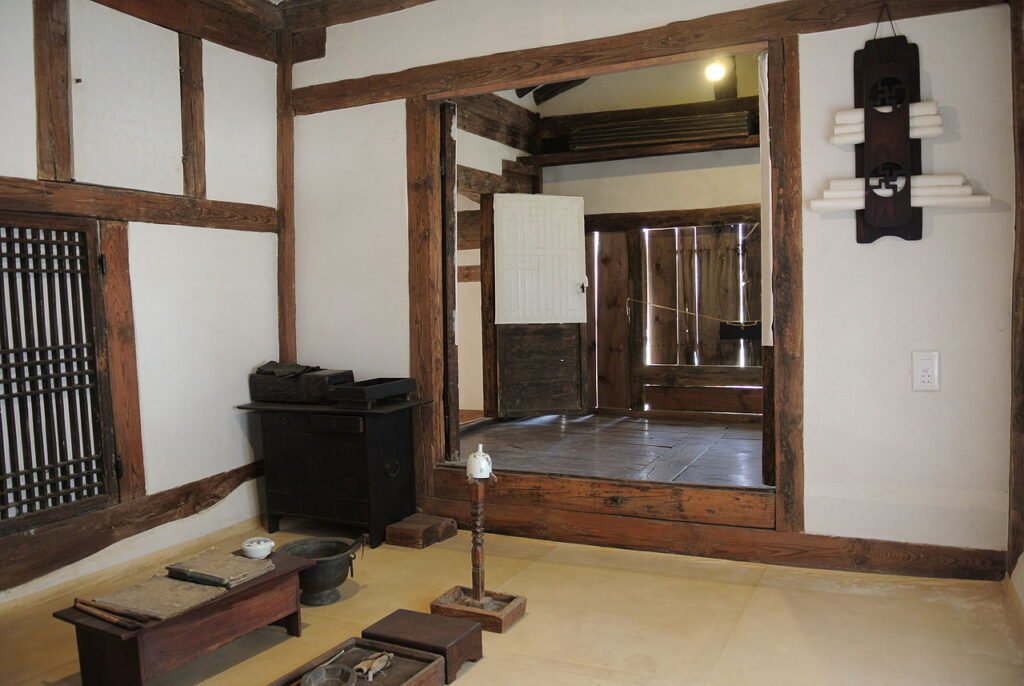
FURNITURE TYPES.
BANDAJI – 반닫이 : Sometimes also called ABDAJI. The bandaji, is the most essential type of furniture for a Joseon dynasty household, was produced throughout the Korean peninsula, and each region developed its own unique style.
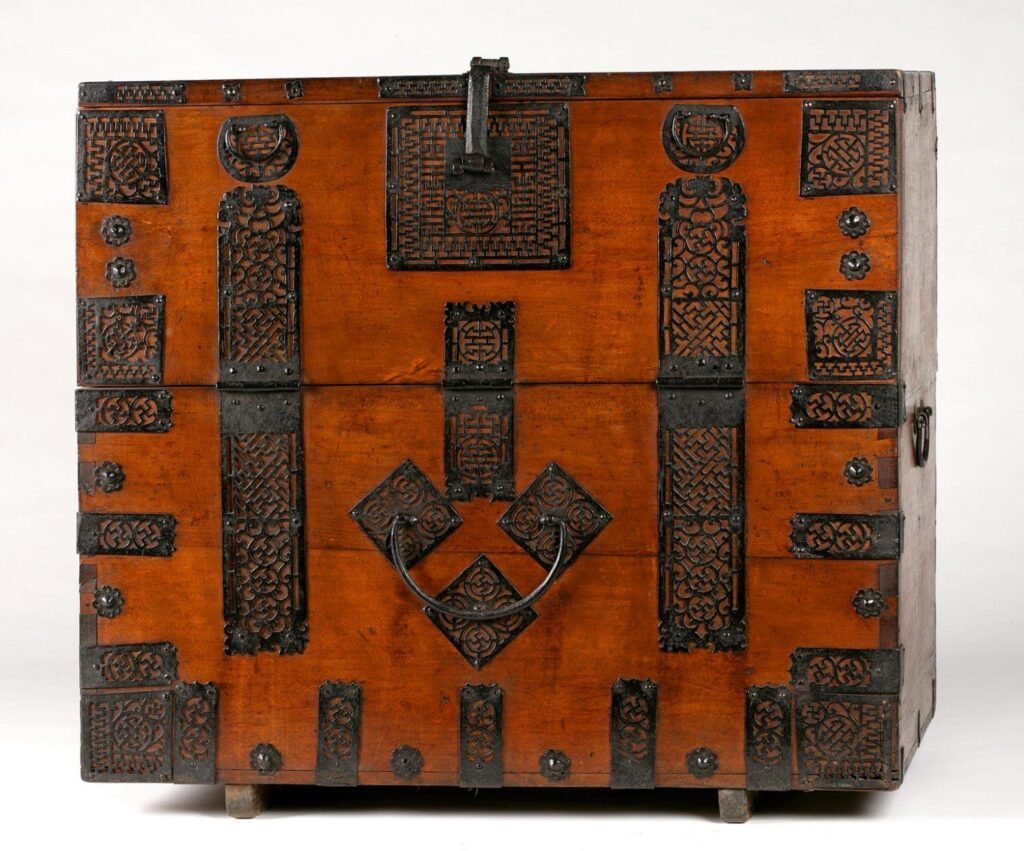
BEONSANG – 번상 : Polygonal tray table
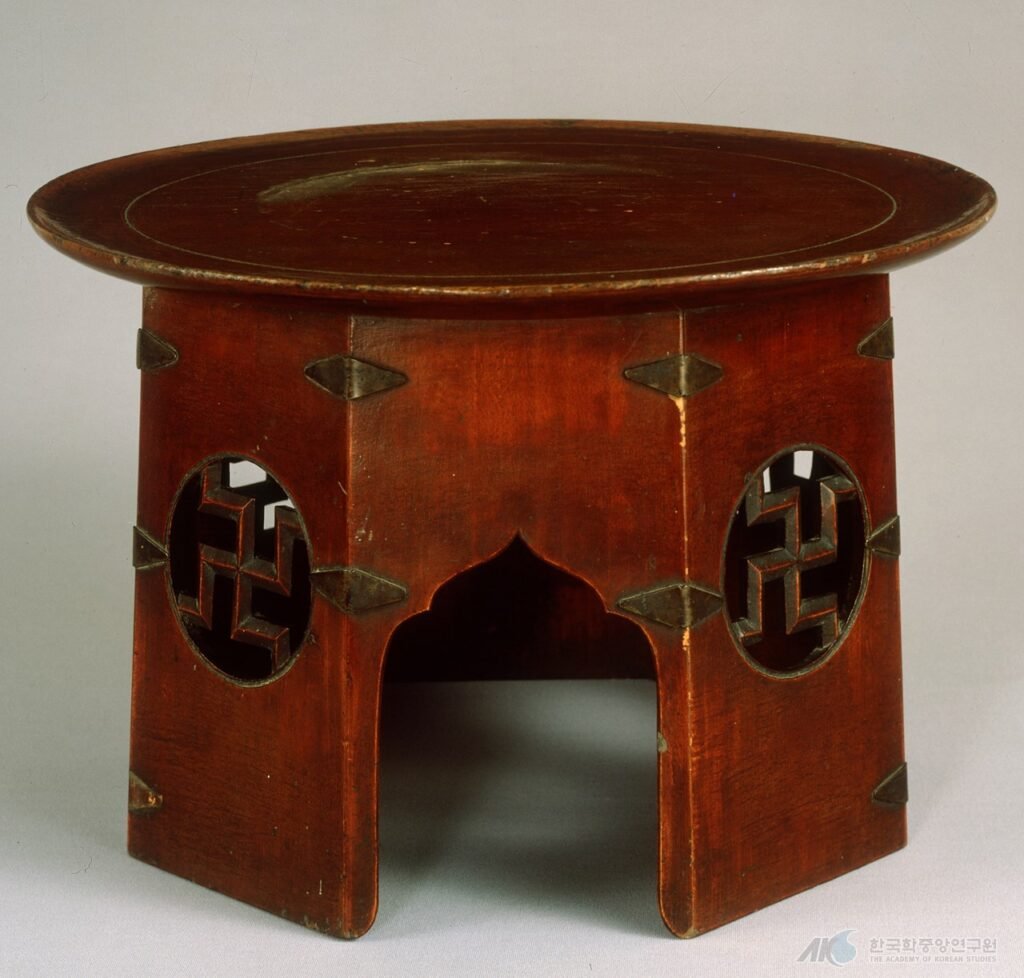
BYEONGPUNG – 병풍 : Folding screen
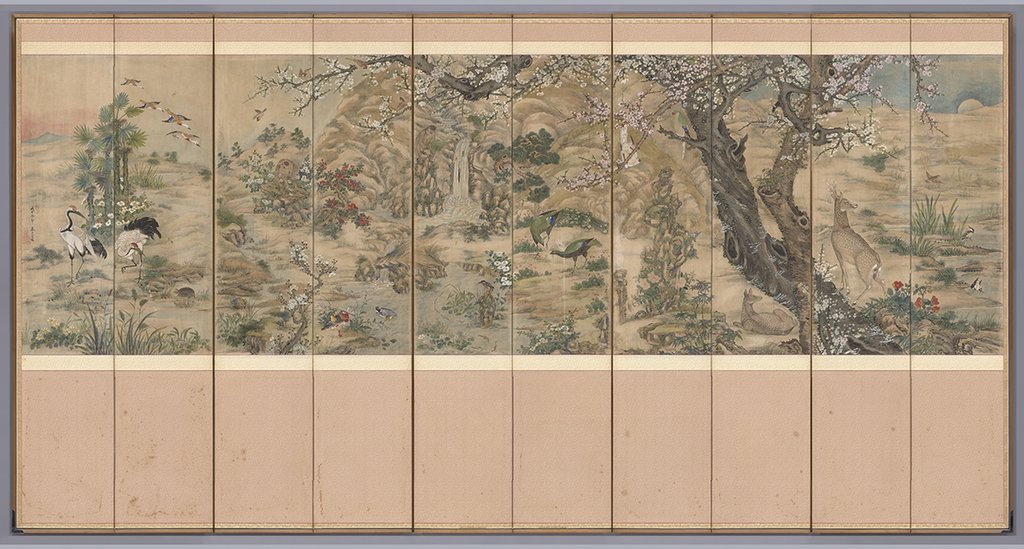
CH’AEKJANG – 책장 : Document or book chest.
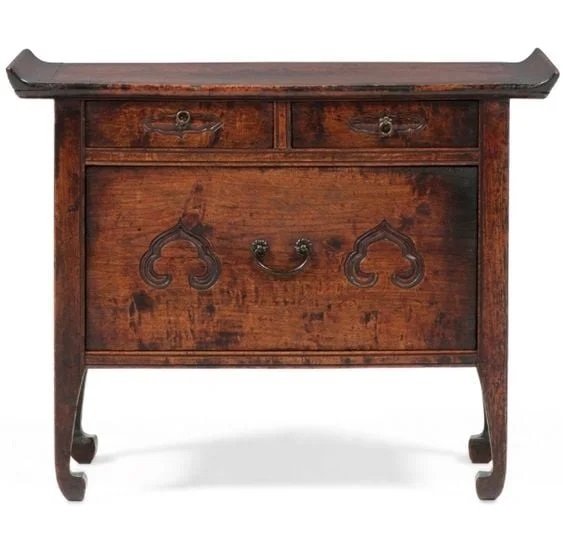
CH’ANJANG – 찬장 : Kitchen chest. Double or triple level cupboard built with sturdy lumber to store large number of heavy items, such as brass, chinaware.
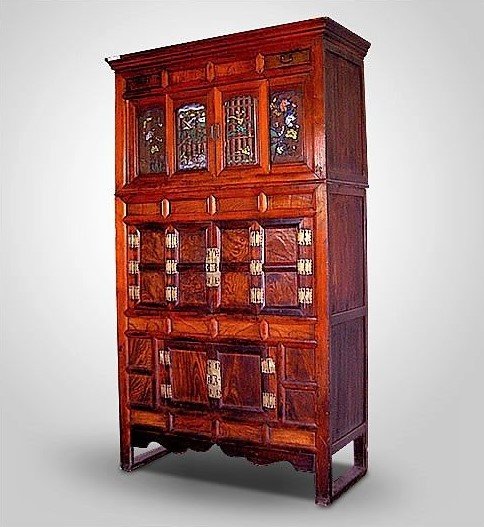
CH’ANTAK – 찬탁 : Shelves built like bookshelves used in kitchens to store food and dishes.
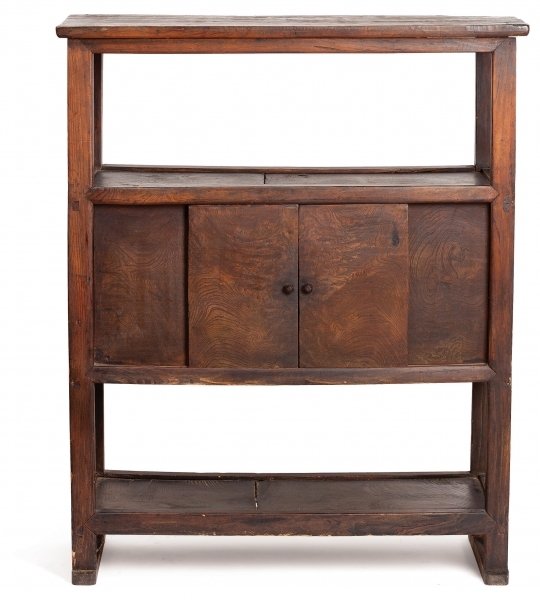
GAMA – 신부가마 : A palanquin typically designed for a single passenger, and it is carried by an even number of bearers, usually two. The term is derived from the Sanskrit word “palyanka“, which means bed or couch
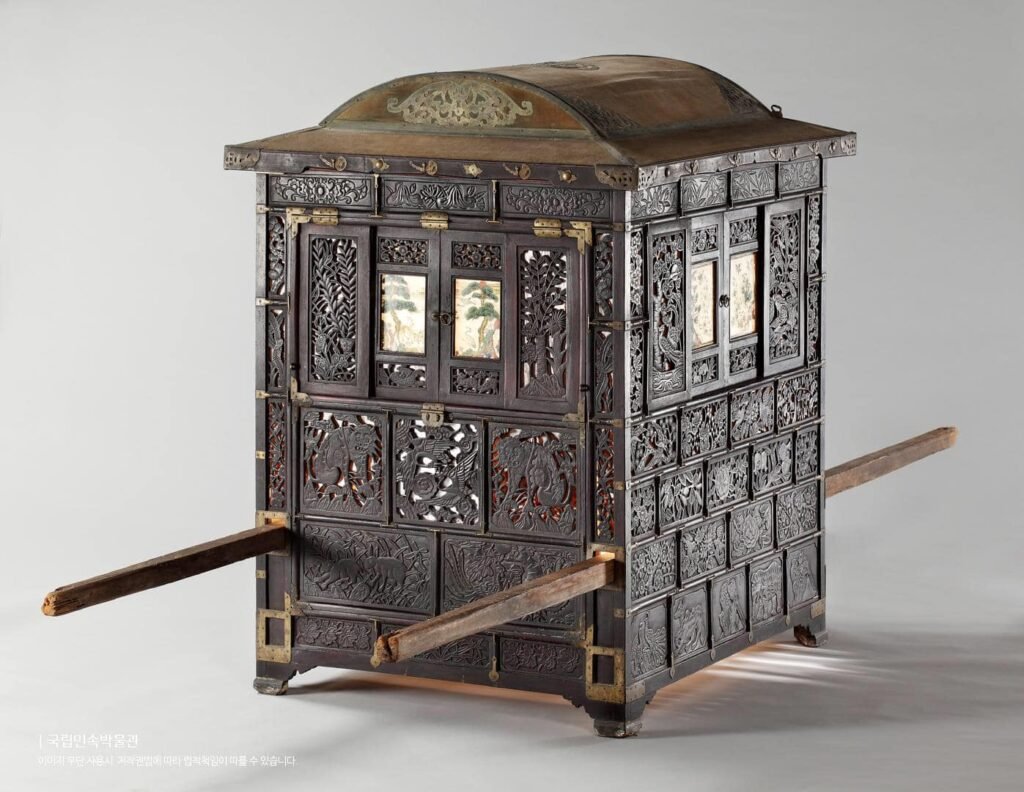
GAMSIL – 감실 : also called GAMA – 가마 or “Shinjujang“, is a place where the spirits of ancestors are enshrined. Many of them are designed in the shape of a house.
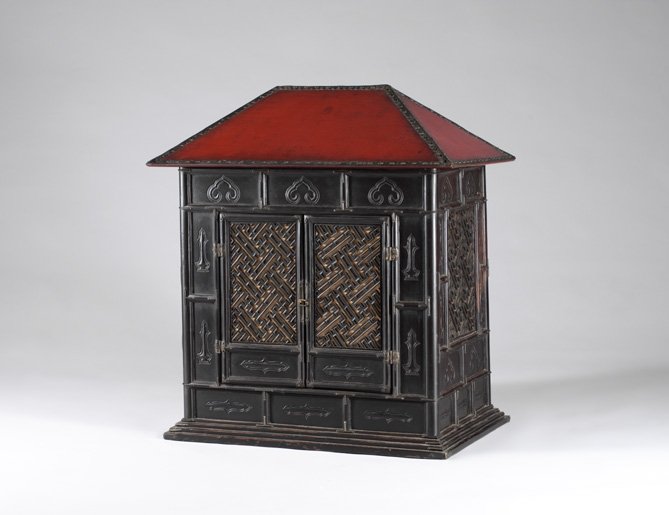
GAT HAM – 갓함 : Hat box
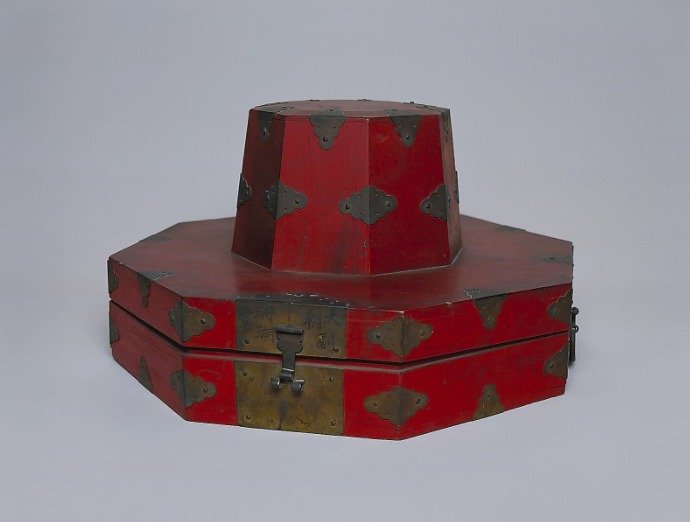
GOBI or PYONJI-GOBI – 고비 : A letter rack used as a storage box for storing various documents such as letters, scrolls, and papers, hanging in a room or on the floor.

KWANSANG or PAKGAK HAM – 팔각함 : Octagonal hat box
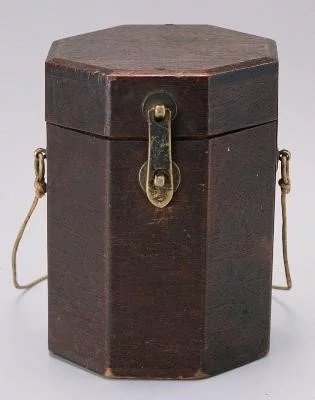
GYO UI – 교의 : stand for memorial tablet
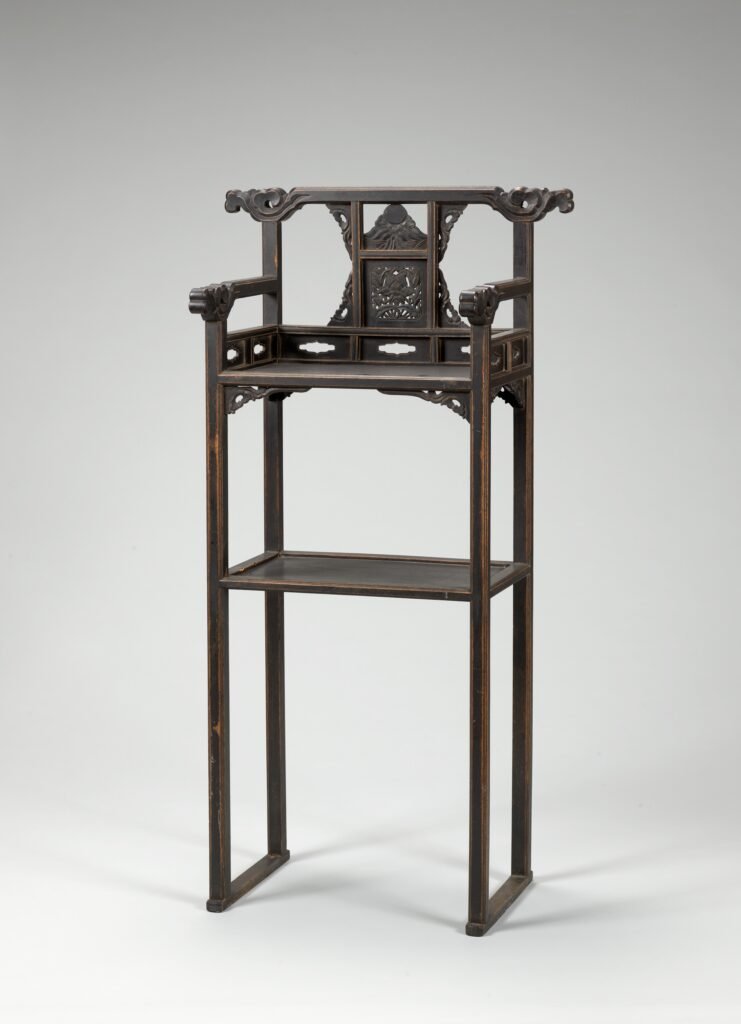
HAM – 함 : Wooden box which open from the top. Also called wedding box.
Korean wedding boxes, known as “Ham” or “Hon-su ham“, are typically characterized by their low and wide dimensions. The average measurements for these boxes are approximately 30cm in height, 60cm in width, and 30cm in depth.
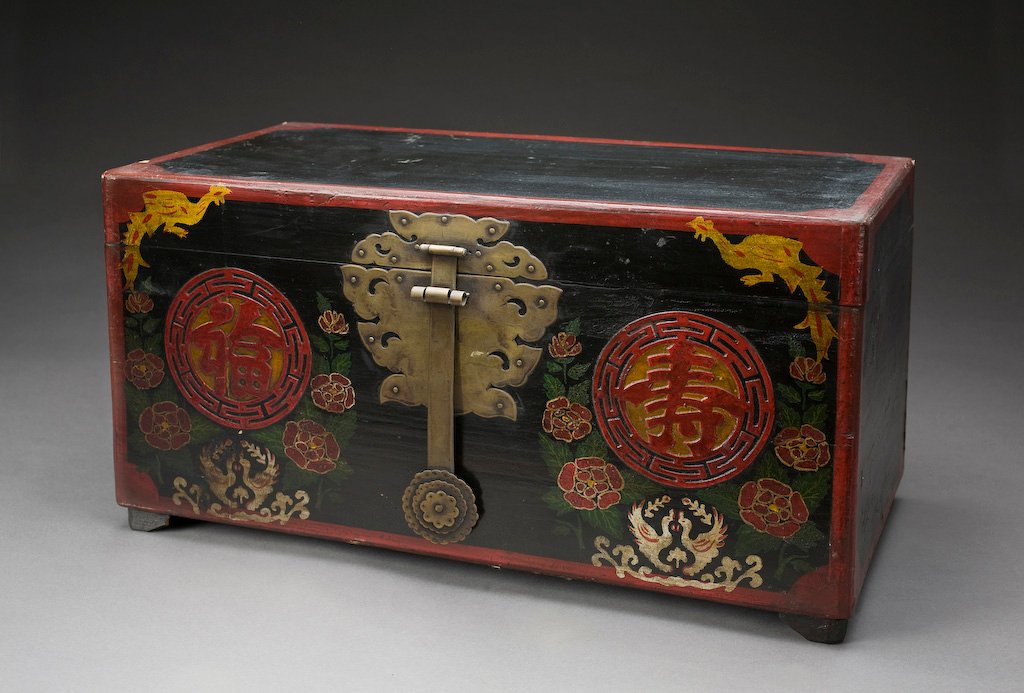
HAEJUBAN – 해주반 : Portable table produced in Haeju in Hwanghae province.
Its top was made from thick wood with engraving on both sides.
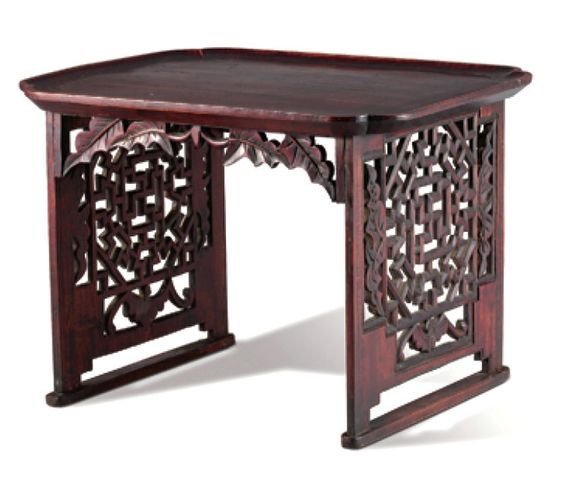
HOJOKBAN – 호족반 : A tiger legged portable table.
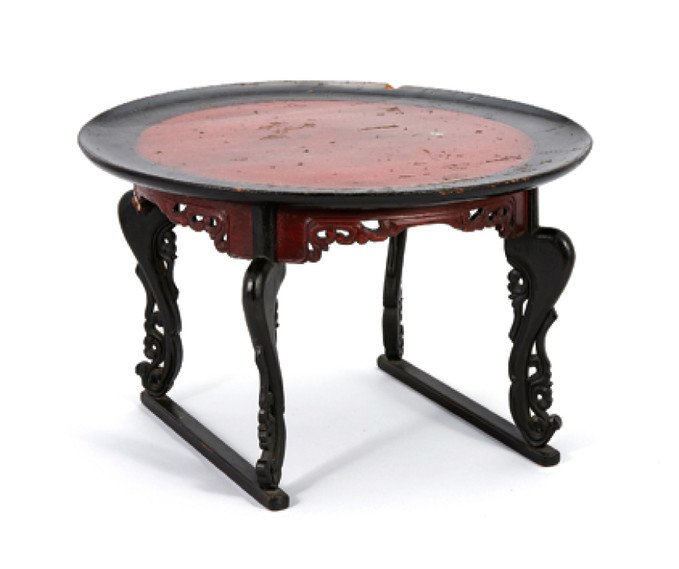
HWARO – 화로 : Brazier
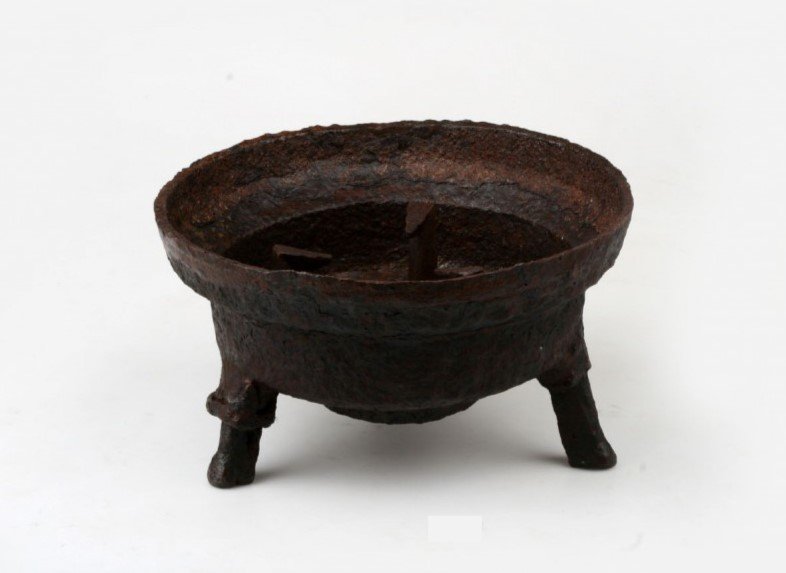
ICHUNG JANG – 이층장: Two level clothing chest found in the “anbang”.

JANG – 장 : Term use to describe a clothing chest. One, two or three levels.
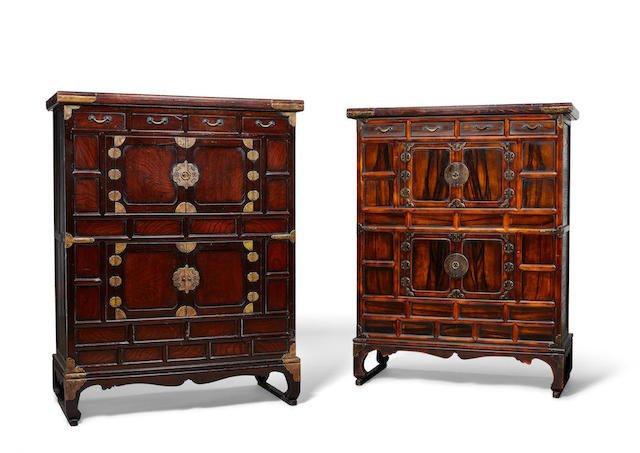
JESA – 제사 : in Korean was and still is a commonly practiced ceremony, typically held on the anniversary of the ancestor’s death.
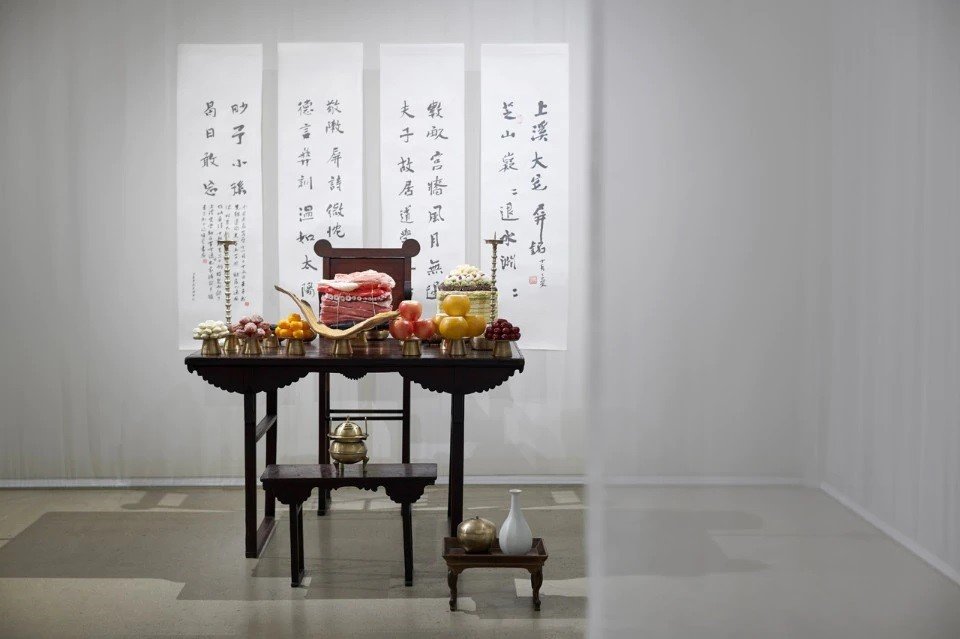
KAP KAE SURI – 갑게수리 : A small container referred to as a “safe,” where nobles stored important documents or valuable items.
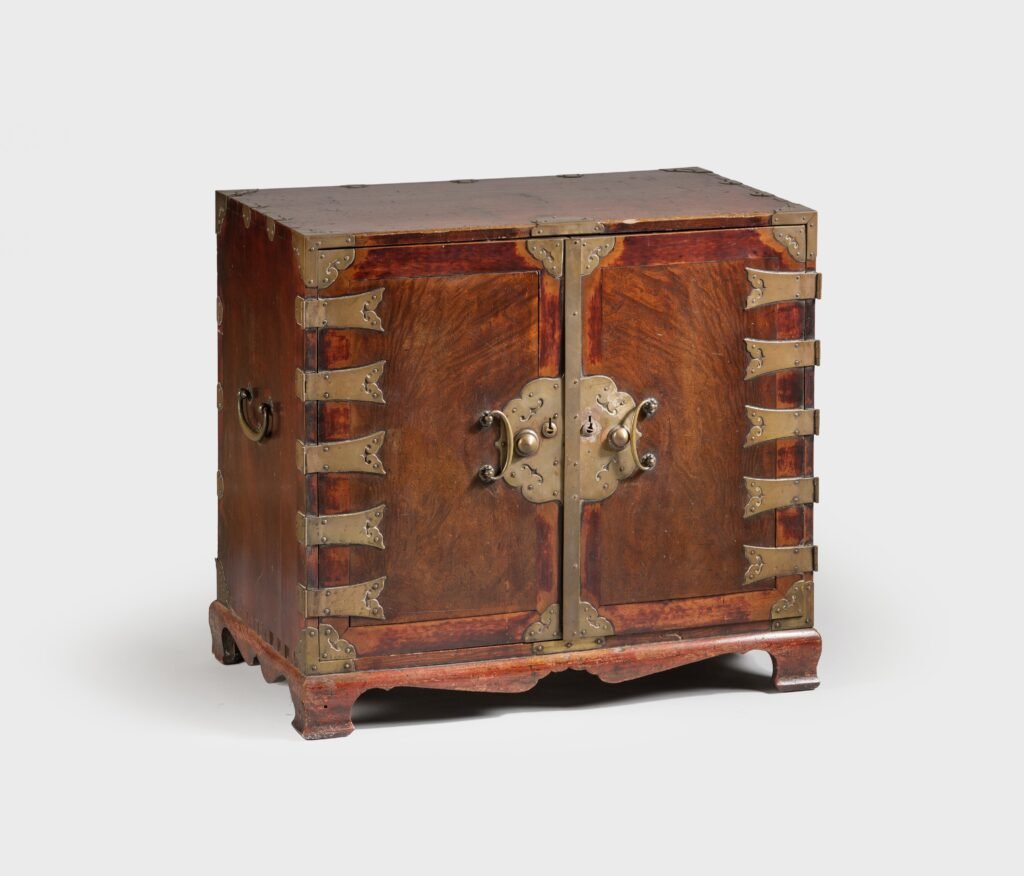
KYONGDAE – 경대 : Mirror box.
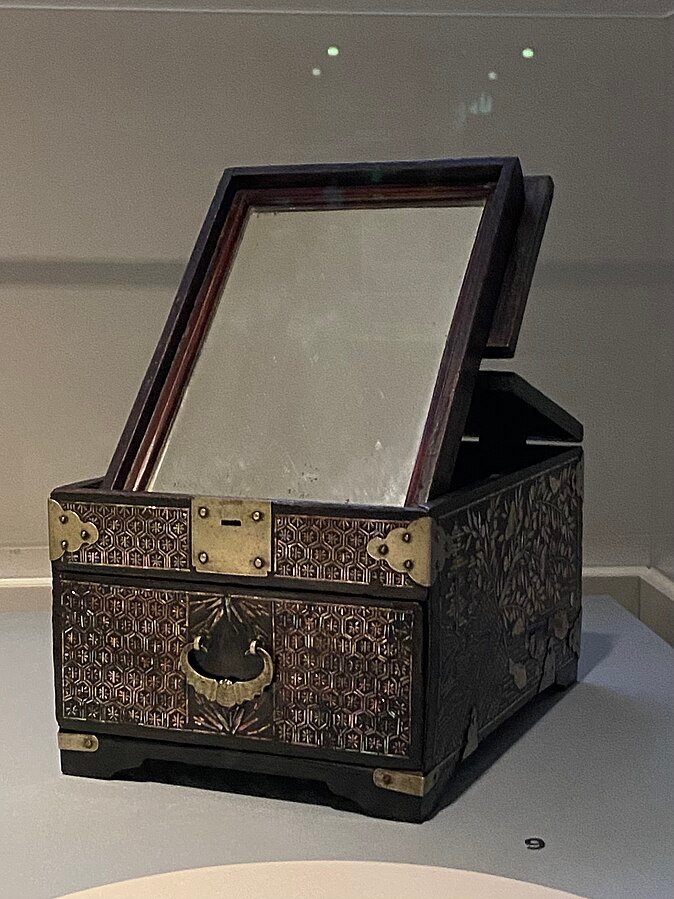
MOK HAM – 목함 or TONG – 통 : General term to describe a box.
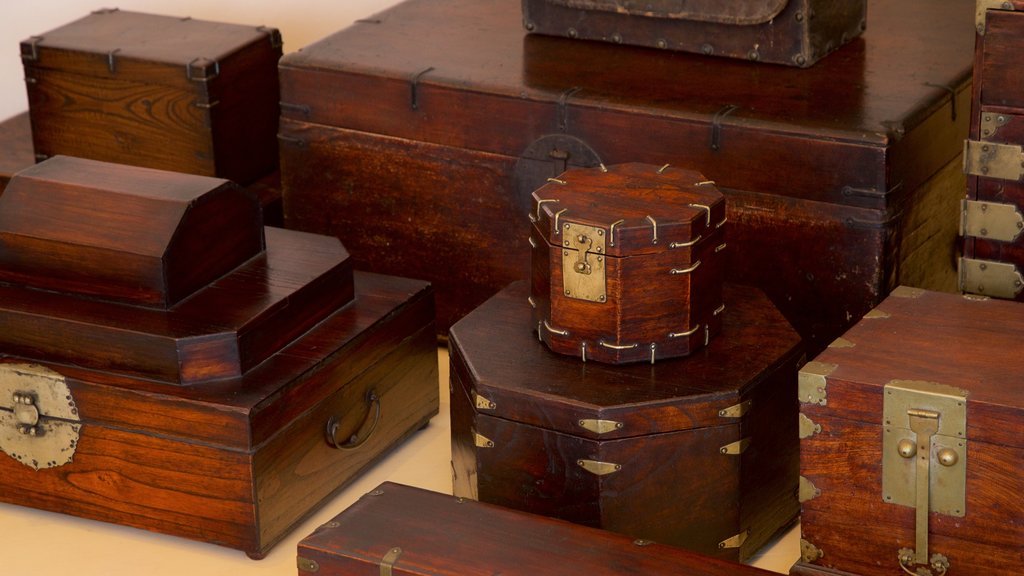
MOK AN – 목안(木雁) : Small wooden duck (Pair) used during wedding ceremonies.
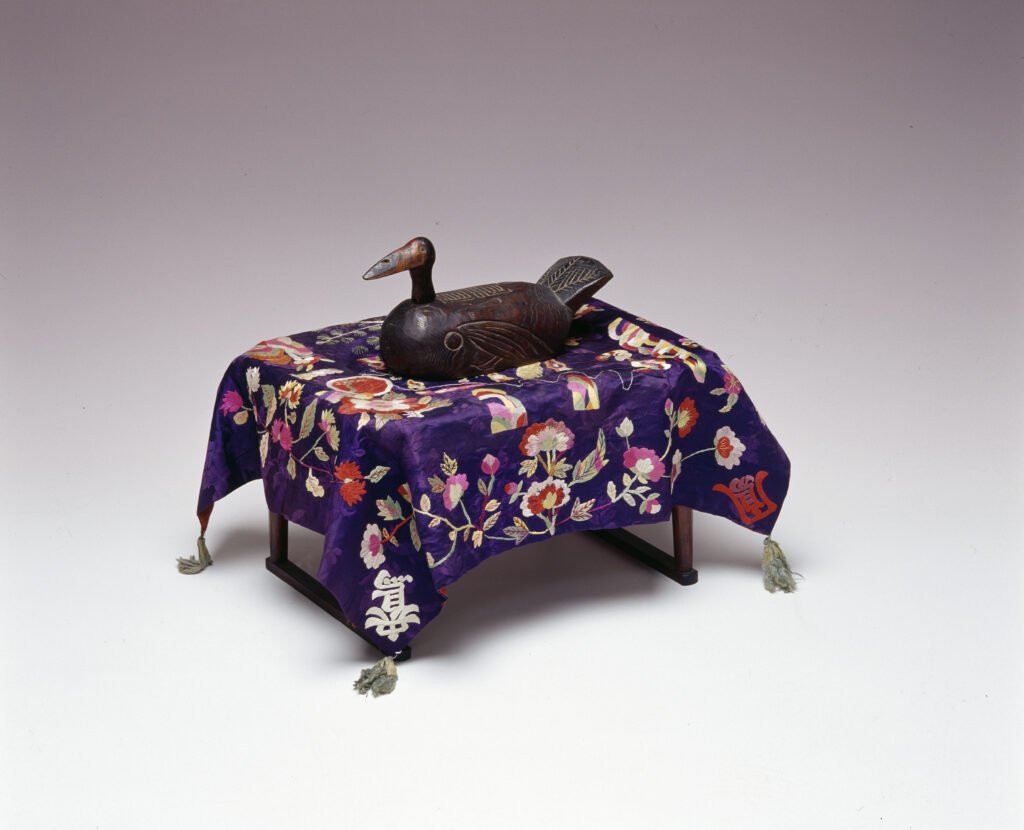
MORIJANG – 머릿장 : It is a unique piece of furniture found in the Korean furniture collection. It likely emerged during the 18th or early 19th century and is commonly referred to as the head side chest in English.
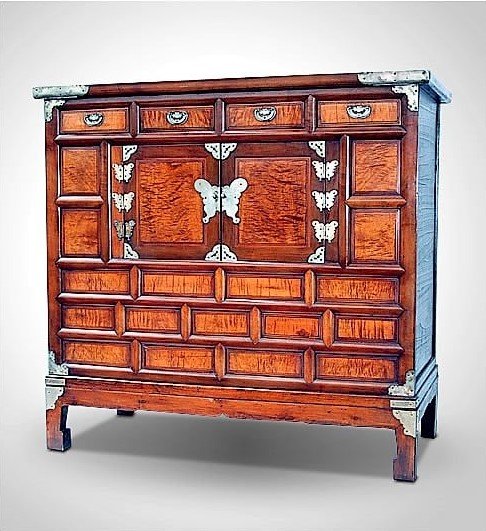
MUNGAP – 문갑 : This small chests were used by both men and women to store documents or stationery and were placed in the main room of the house.

ICH”UNG NONG – 이층농 : Stackable clothing chest.
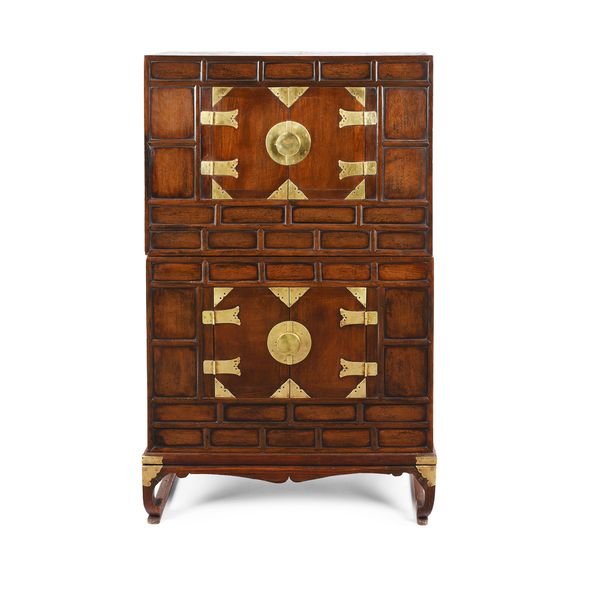
PALGEOL-I – 팔걸이 : An armrest or pillow for the arm.
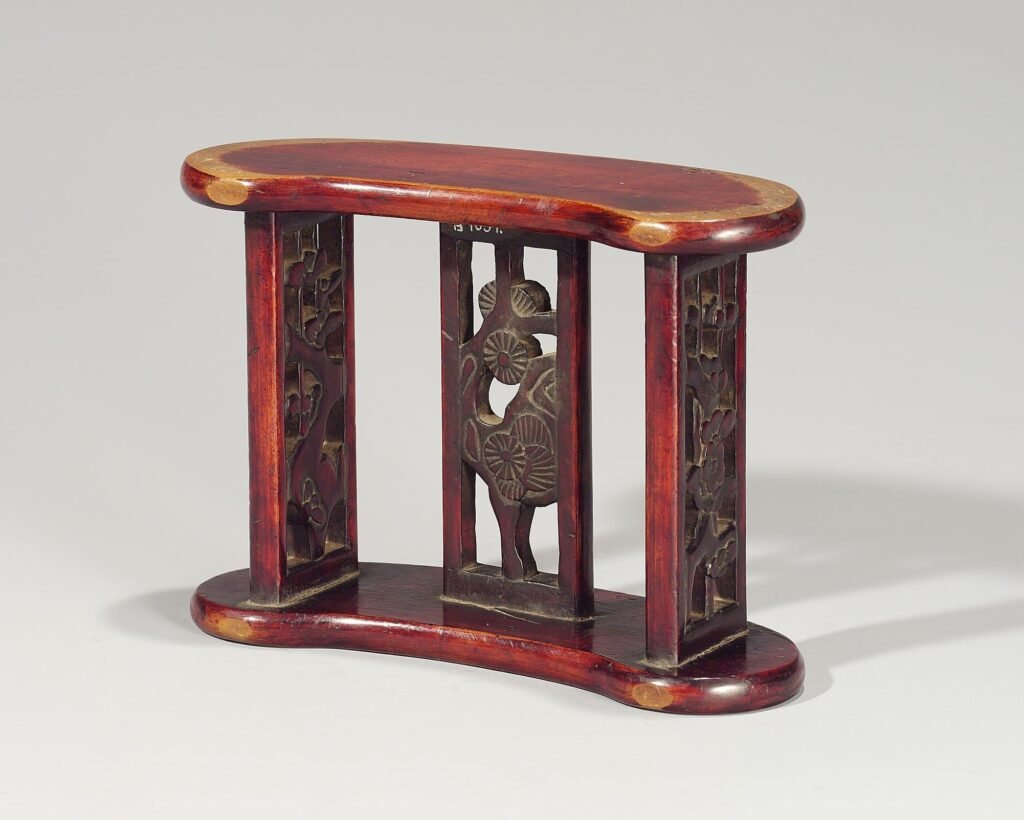
PIT CHOP – 빗접 : Women’s Incidentals boxes primarily for combs and hairpins.
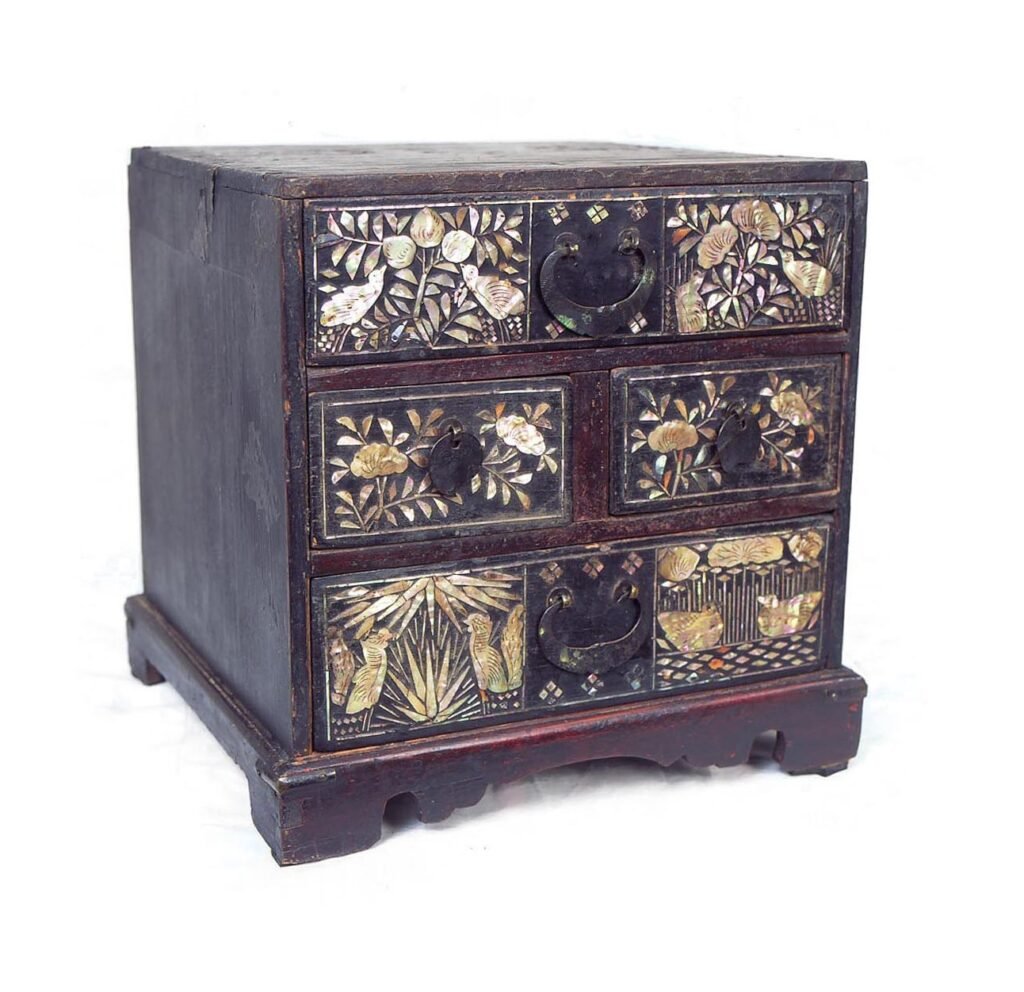
PYONGSANG – 평상 : A wooden bed with lattice bottom section. Two or three sections were put together to be used as a bed.

SABANG TAKJA – 사방탁자 : A book and display stand
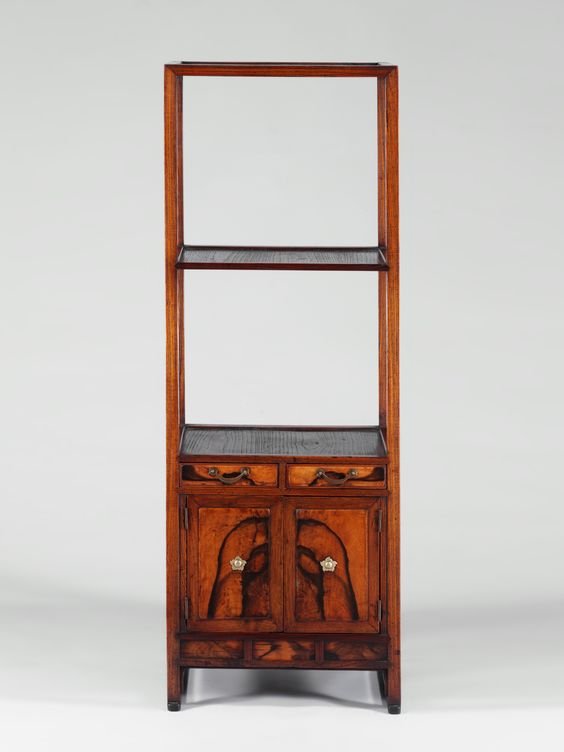
SAH IN KYO – 사인교 : Palanquin.
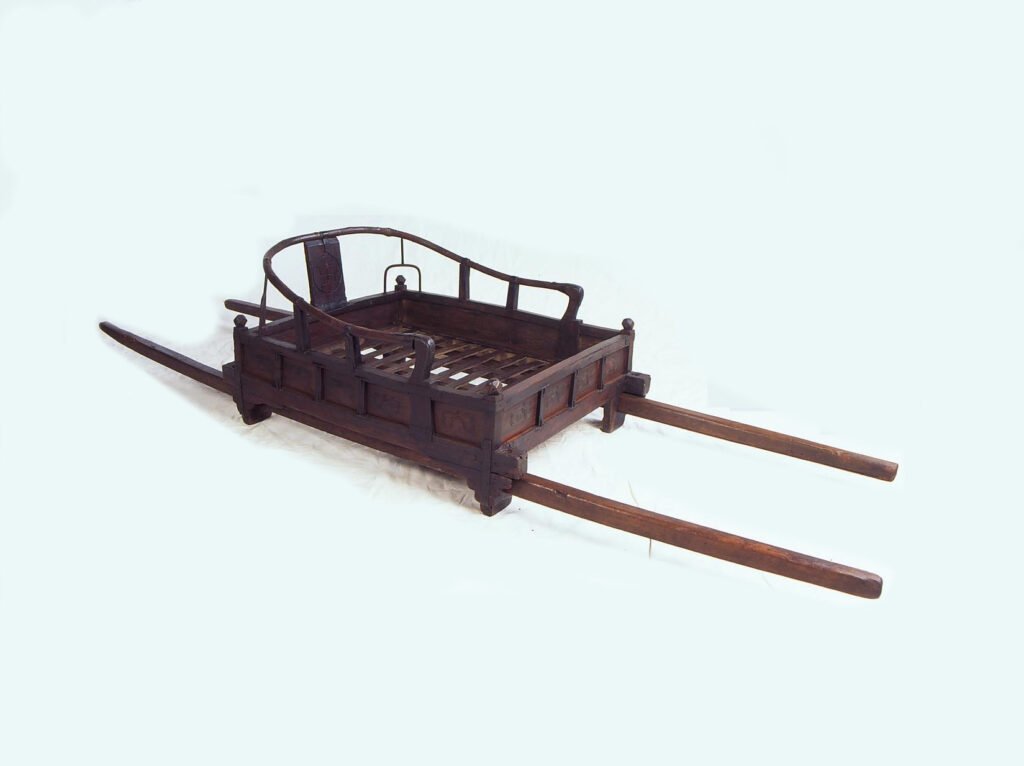
SAMCH’UNG JANG – 삼층장 : Three level clothing chest.
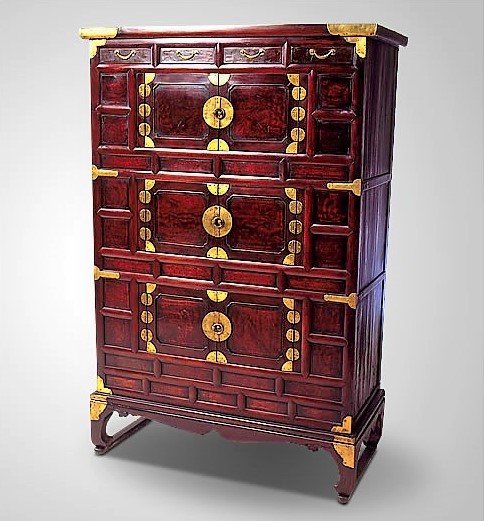
SORYU HAM – 서류함 : Document box
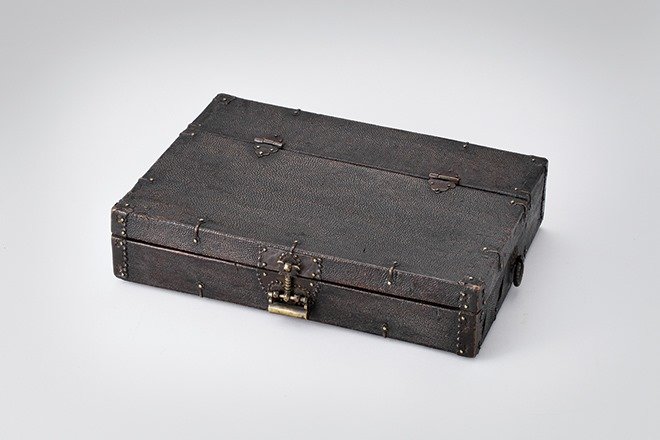
SEOAN – 서안 also called CHAEKSANG – 책상 : Low scholar desk yangban men used in a sitting position; They came in two types, Gyeongsang and Pomsang.

GYEONGSANG – 경상 : Small desk which was used as a table for reading Buddhist scriptures in Buddhist temples during the Goryeo Dynasty. In the Joseon Dynasty, it found common use as a writing table. The reason for the rolled-up ends was to prevent scrolls from slipping off when unfolded.
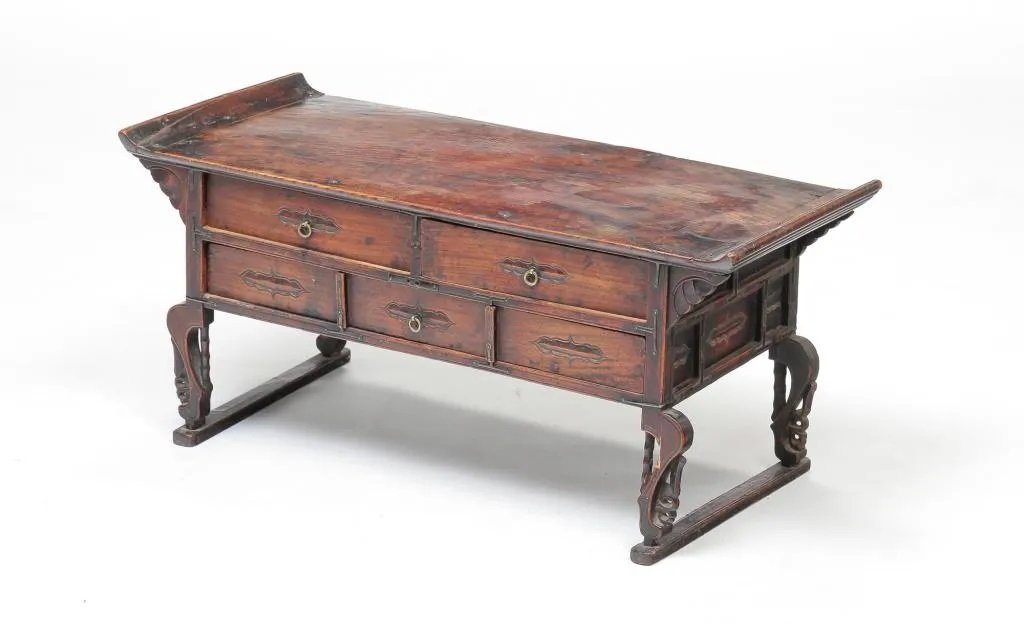
SOBAN – 소반 : Small low table.
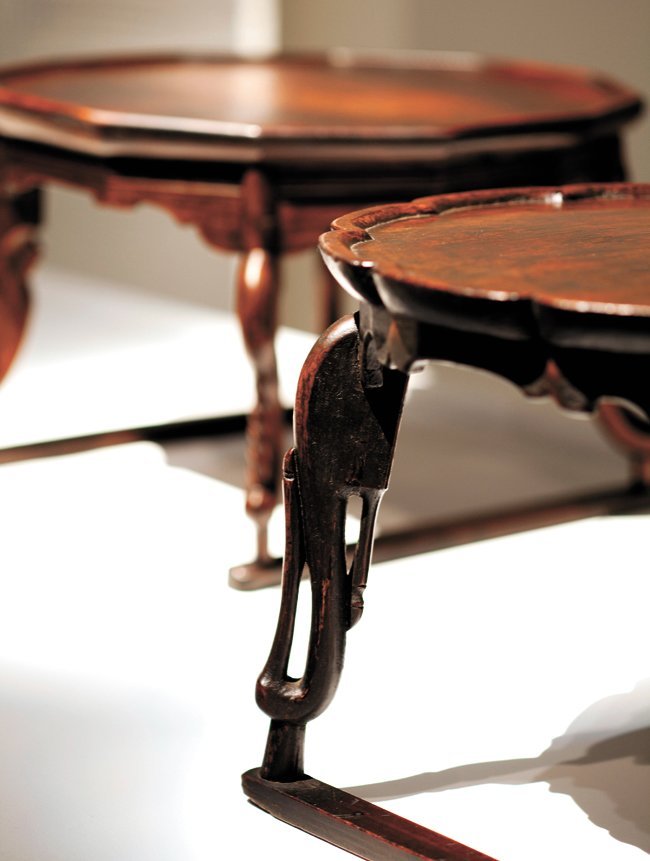
TON-KWE – 돈궤 : Called coin chest in the west, this large box was used to store coins.
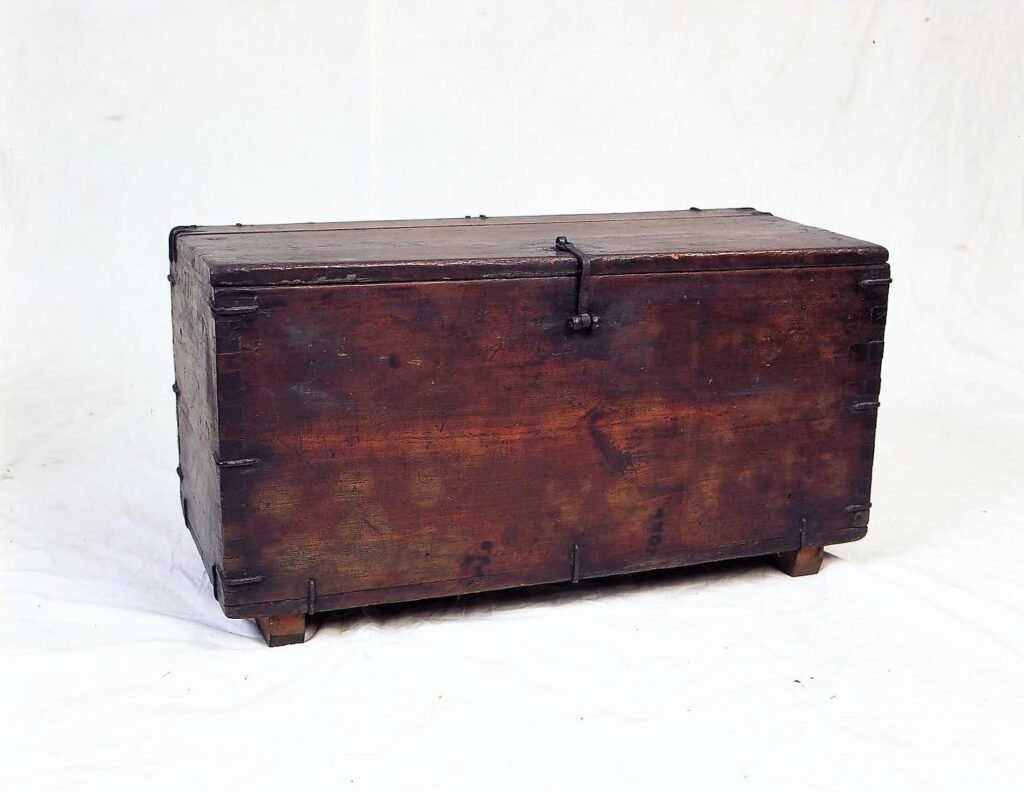
TUIJU – 뒤주 : Tuiju, boxes used for storing rice and beans, were commonly used all over the peninsula.
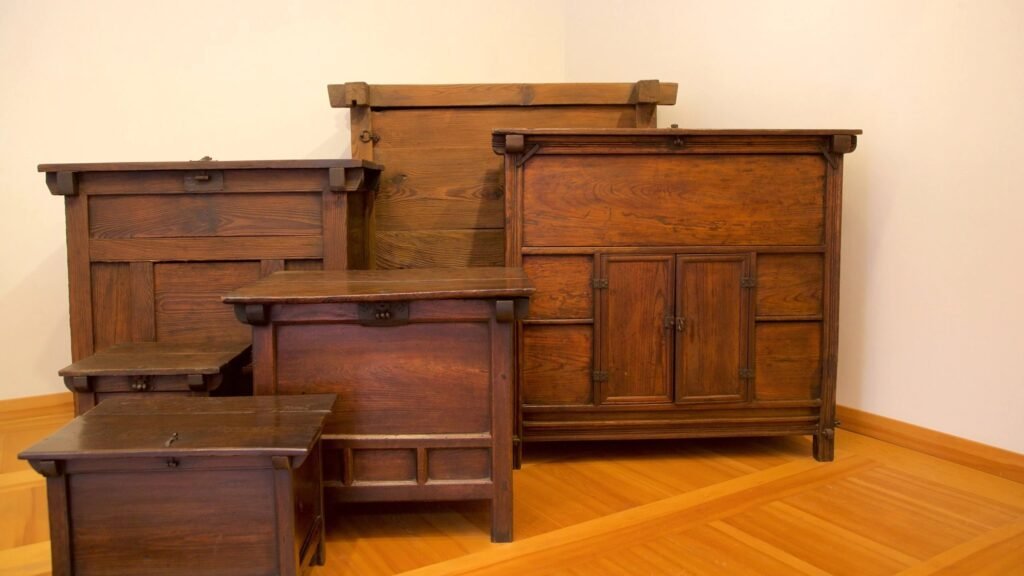
UIGORI JANG – 의걸이장 : A wardrobe chest (Kwanbok-Jang or Uigori-Jang) has much larger doors than any other type of Jang.
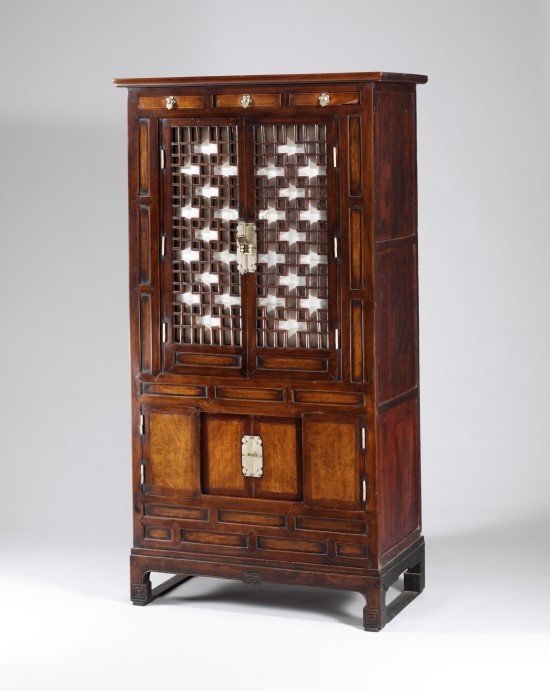
YAK JANG – 약장 : Medicine chest
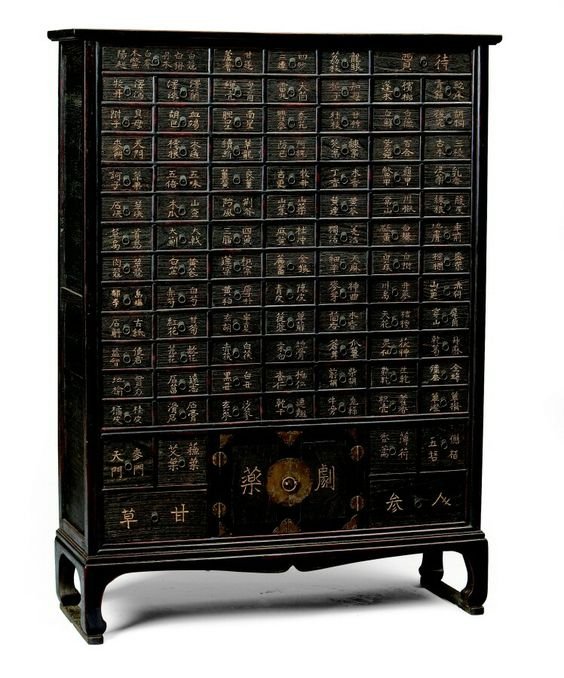
YEONSANG – 연상 : Inkstone box.

YONG YEO – 영여 : also known as “YONG YO” or “SADANG“ is an ancestor shrine.
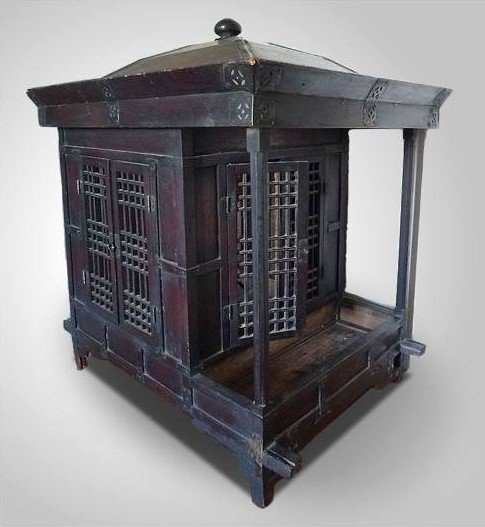
DECORATIVE PATTERNS.
BULLOCHO – 불로초 : Mythical fungus. This plant (mushroom) is an ancient symbol of longevity. The pattern is used on furniture decoration and Korean art.
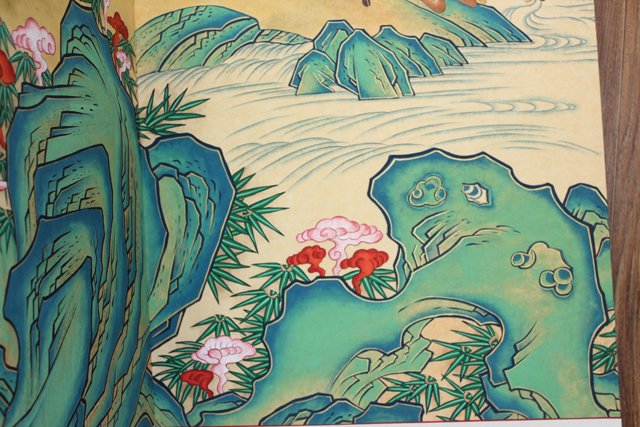
MANJA – 만자 : Decorative pattern which represent a good fortune and auspiciousness.
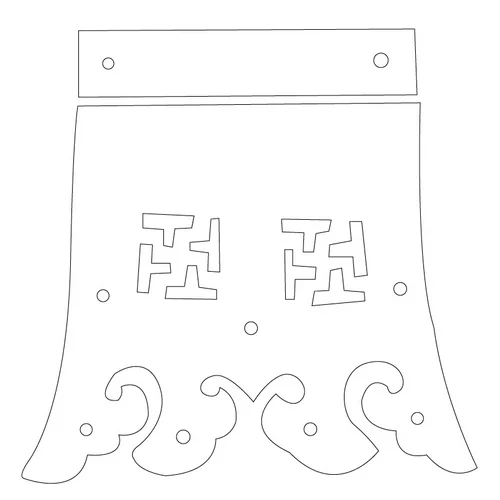
TAEGEUK – 태극 : (symbol) yin and yang

ACCESSORIES.
BYEORU – 벼루 : inkstone
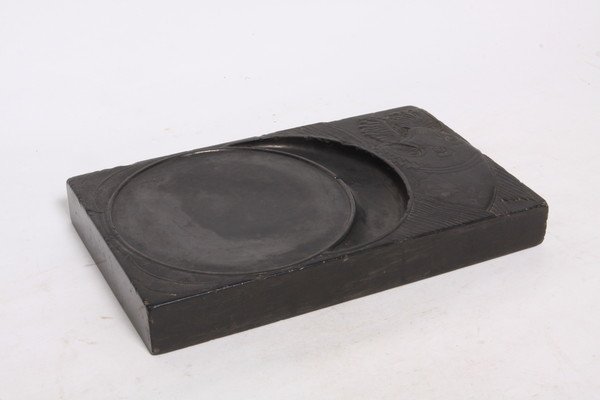
HYANGRO – 향로 : Incense burner

TTEOKSAL – 떡살 : Wooden mold for Korean rice cakes.
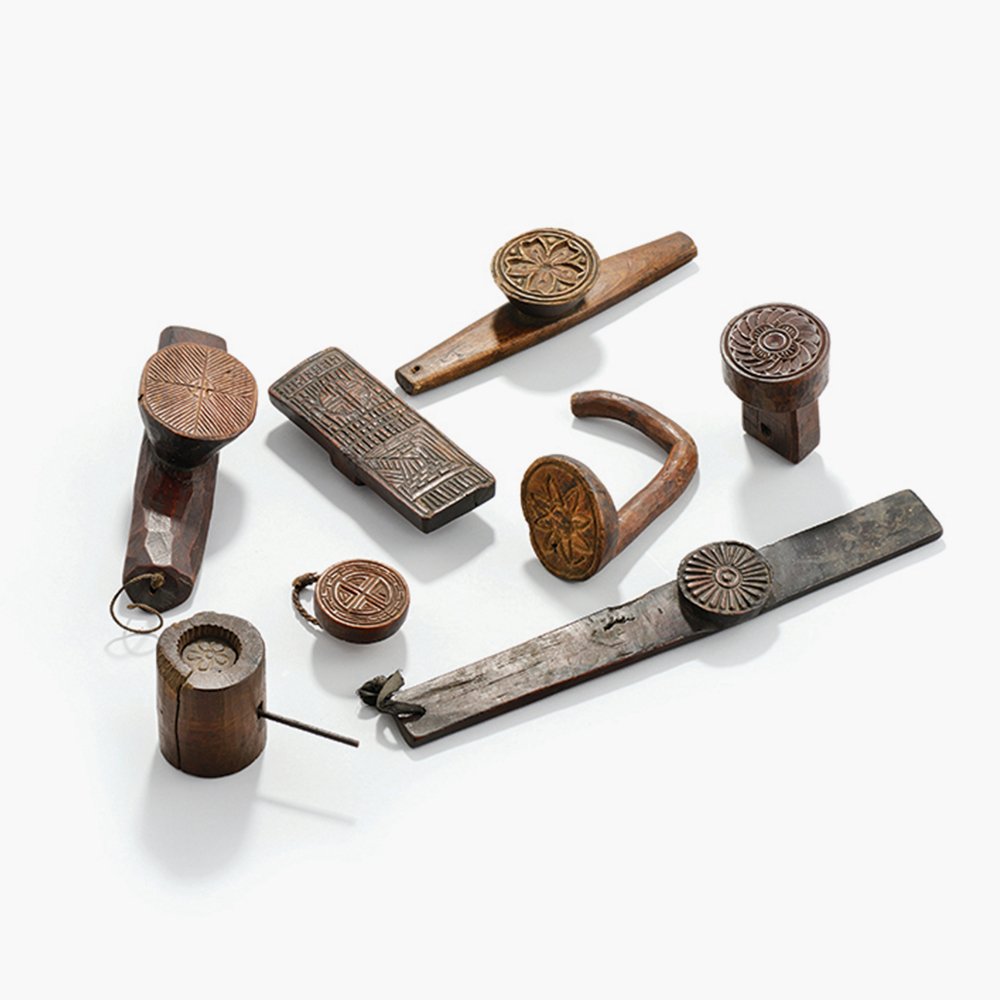
MATERIALS & FINISHING METHODS.
HANJI – 한지 : is the name of traditional handmade paper from Korea. Hanji is made from the inner bark of Broussonetia papyrifera, known colloquially as paper mulberry.
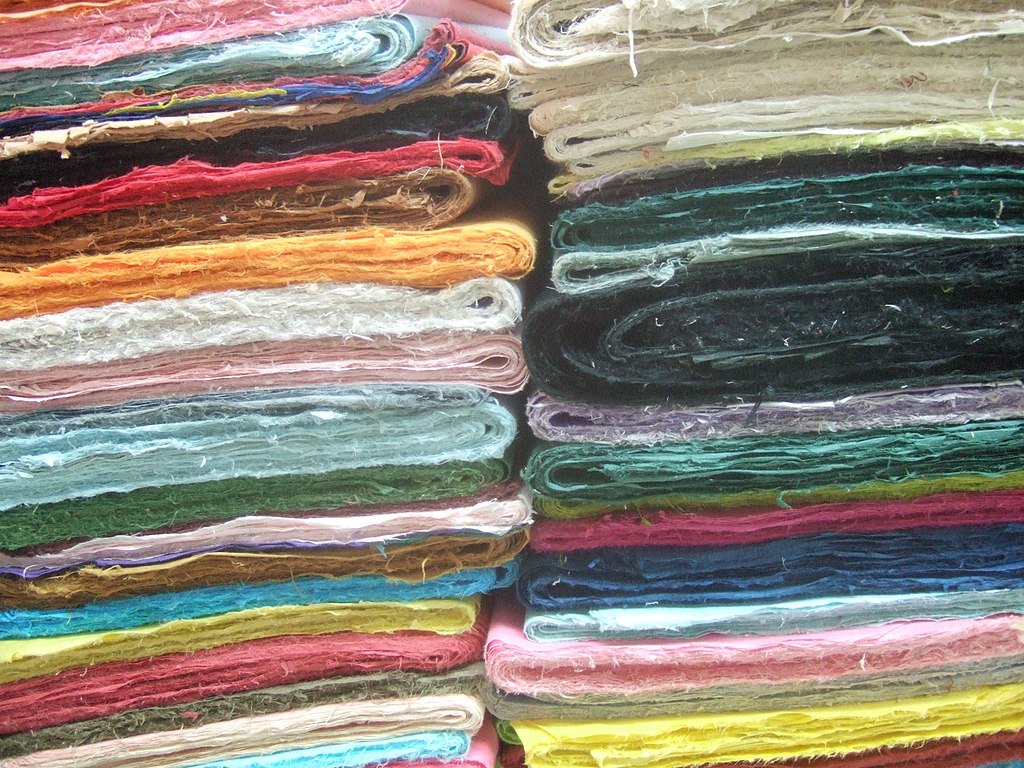
HWAGAK – 화각 : Painted ox horn panels
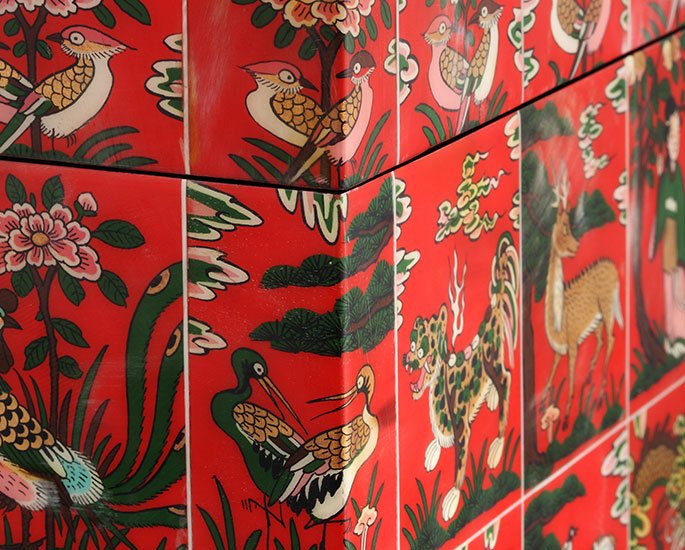
JUCHIL – 주칠 : Red lacquer.
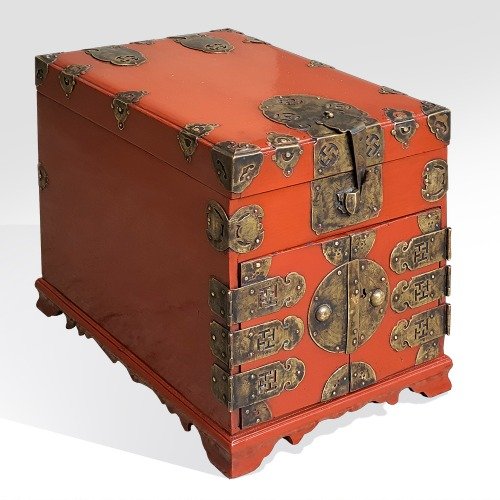
NAJEON – CHILGI – 나전 – 칠기 : Mother-of-pearl inlay methods.

NAKDONG – 낙동 : It is a wood burning technique finish especially used on paulownia.
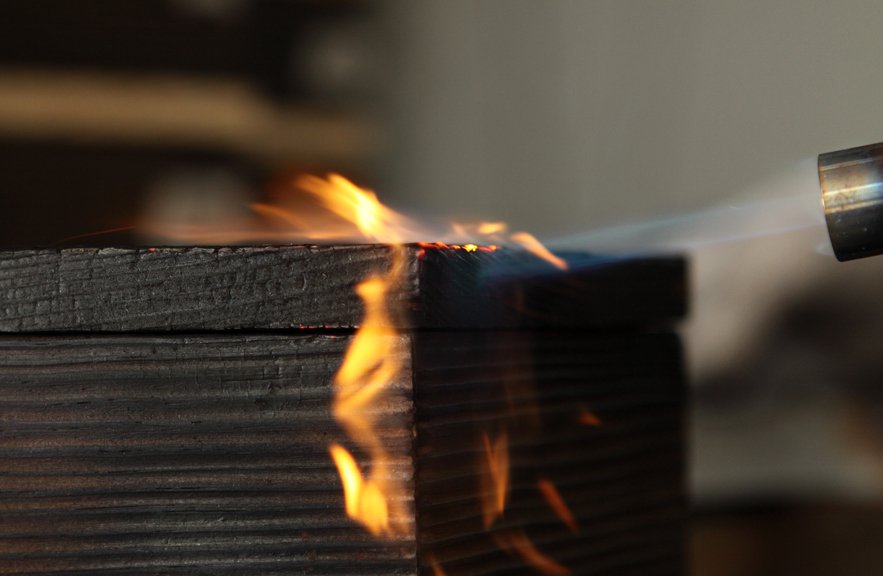
OTTCHIL – 옻칠 : Lacquer.

WOODS.
NAMU – 나무 : Wood.
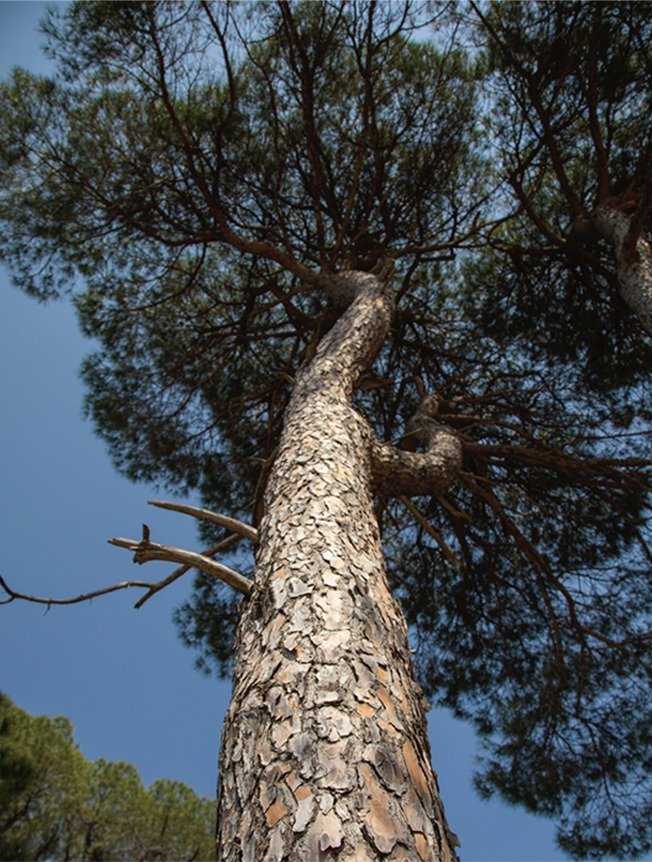
CHAMJUK NAMU – 참나무 : Oak.

DAE NAMU – 대나무 : Bamboo.

KAM NAMU – 감나무 : Persimmon.
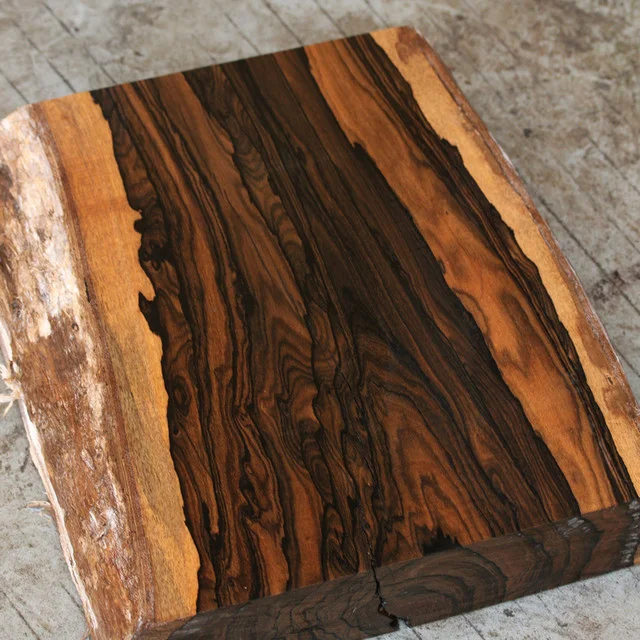
MULP URI NAMU – 물푸레 나무 : Ash.
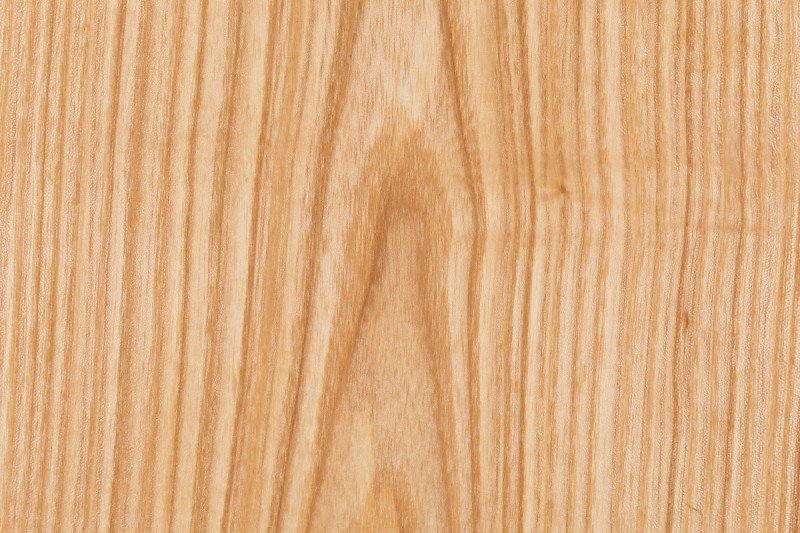
NURUP NAMU – 느릅나무 : Elm.
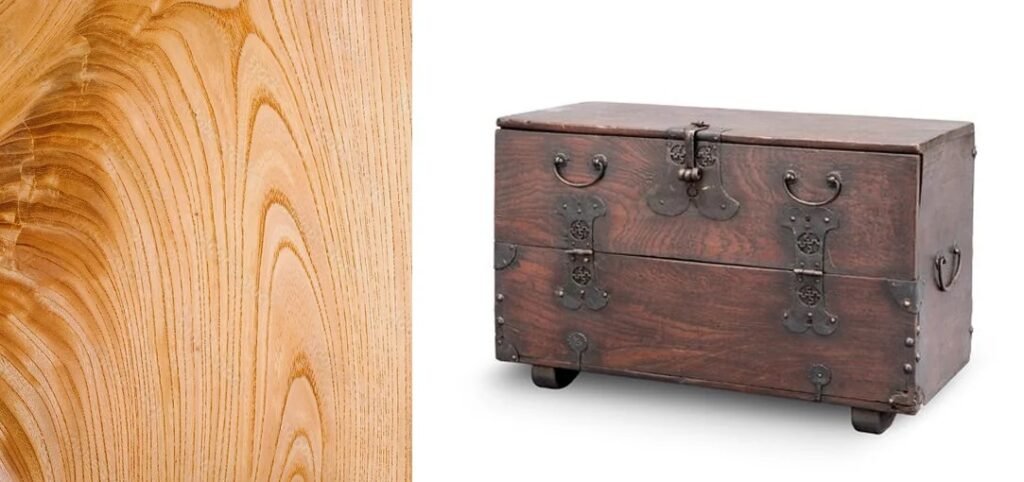
NUTUI NAMU – 느티나무 : Zelkova.
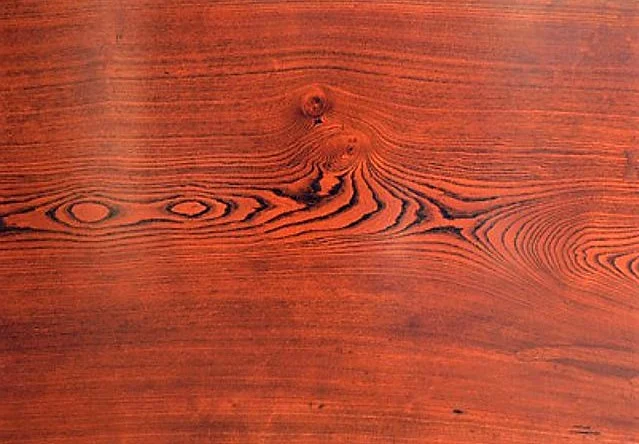
ODONG NAMU – 오동나무 : Paulownia coreana, also called Paulownia glabrata or Korean paulownia, is an indigenous species of South Korea. It is cultivated in South pyongan and the south of Gyeonggi provinces.
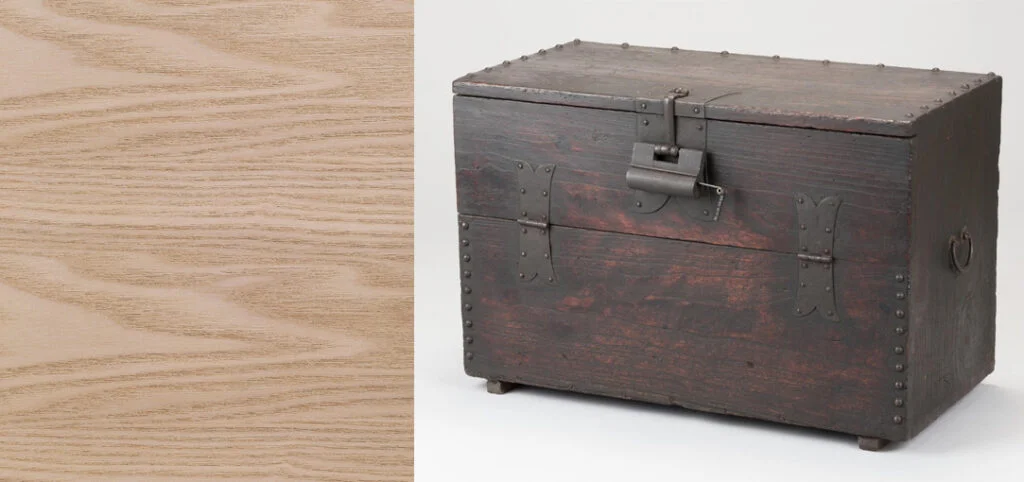
PAE NAMU – 배나무 : Pear.
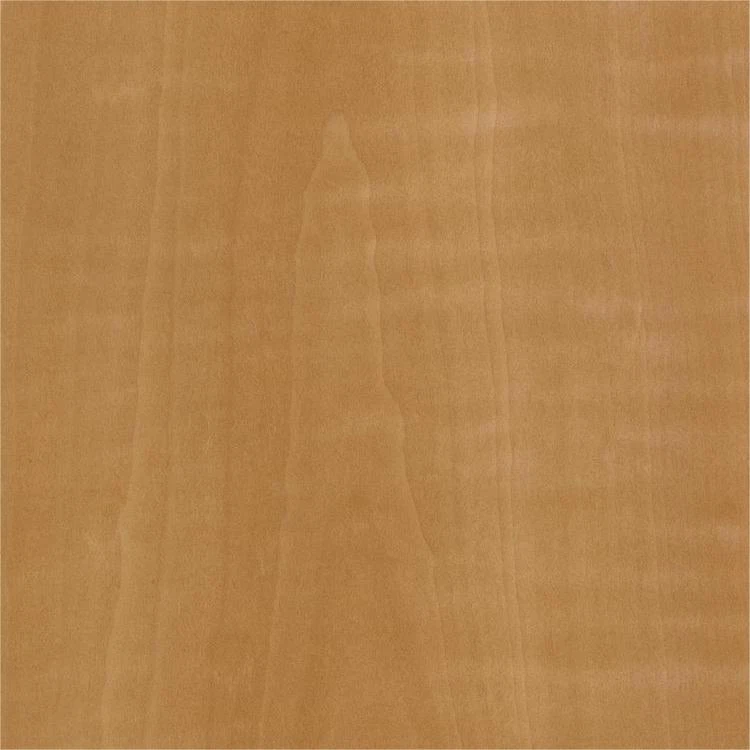
PI NAMU – 피나무 : Linden.
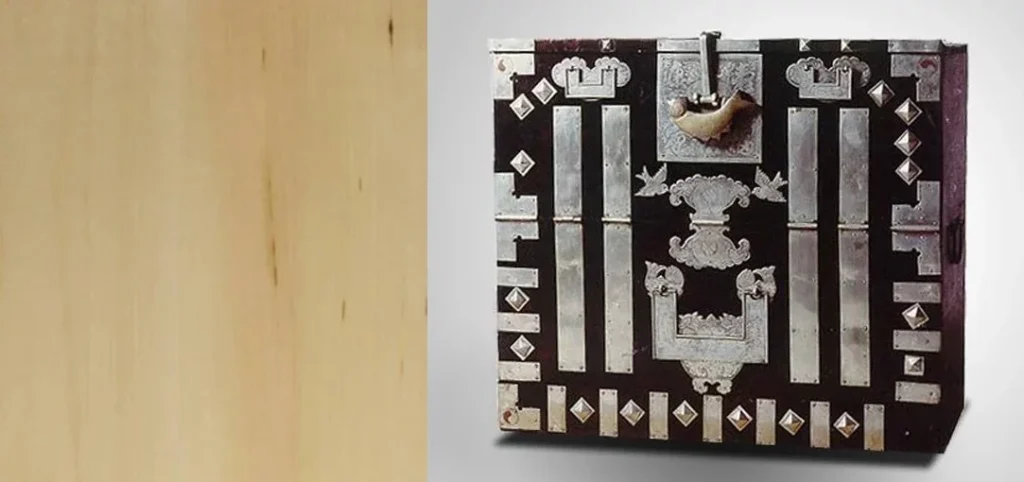
POT NAMU – 벚나무 : Cherry.
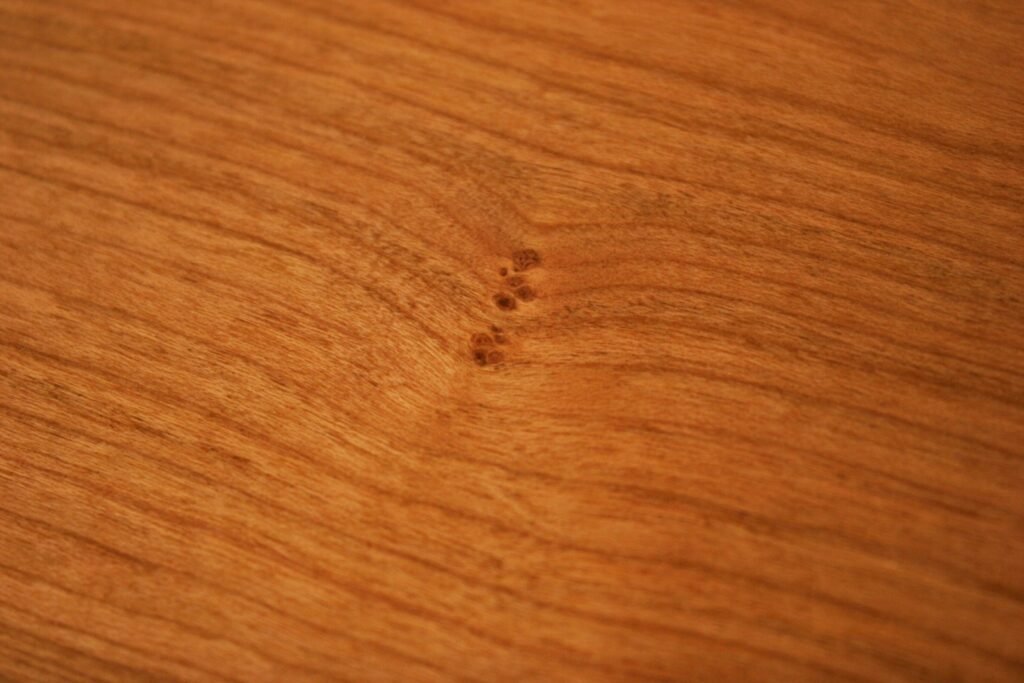
SO NAMU – 소나무 : Pine.

TANP UNG NAMU – 단풍 나무 : Maple.
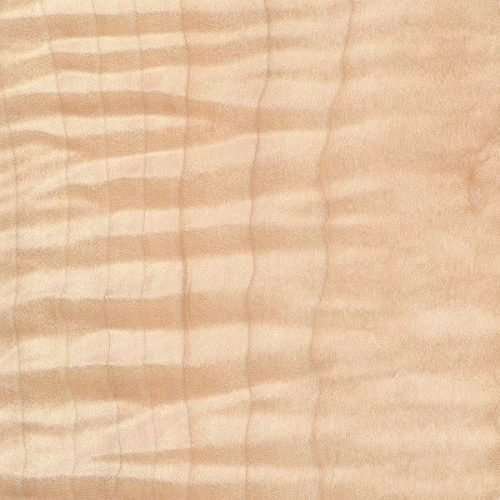
UNHAENG NAMU – 은행나무 : Gingko.
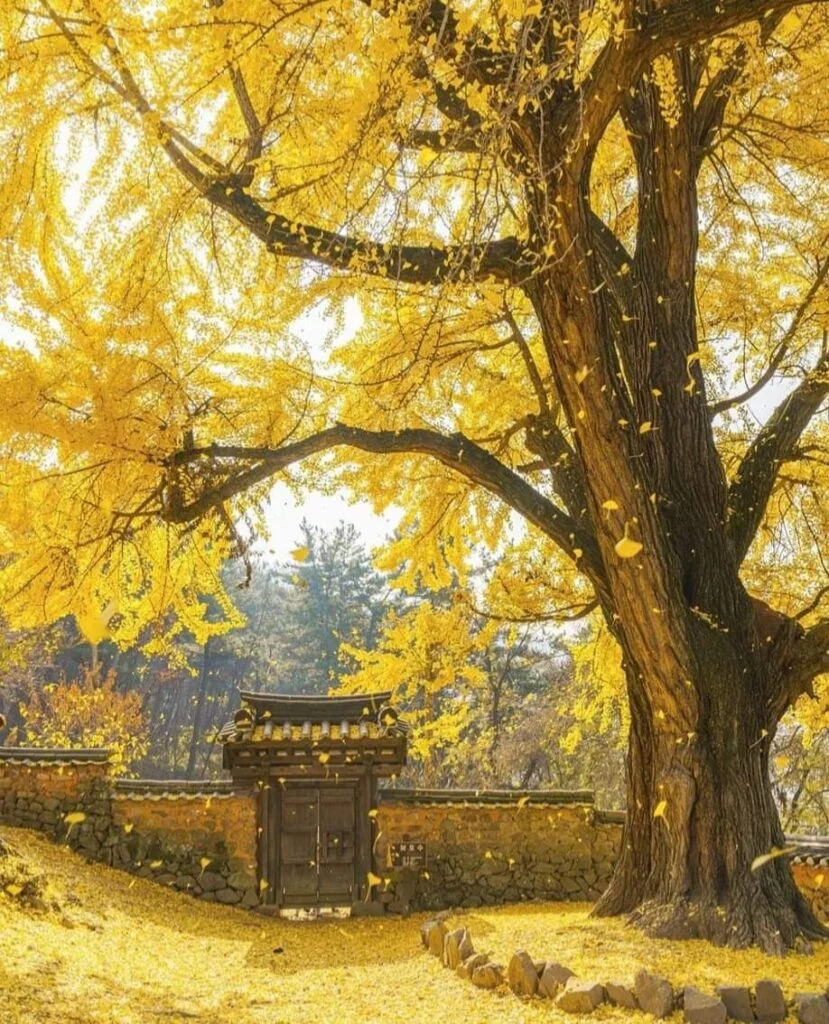
TOOLS.
MOKTONG – 목동 : Ink line holder

NB: Some information provided from the book Hanoak. Traditional Korean homes. Hollym, Elizabeth,NJ, Seoul.

